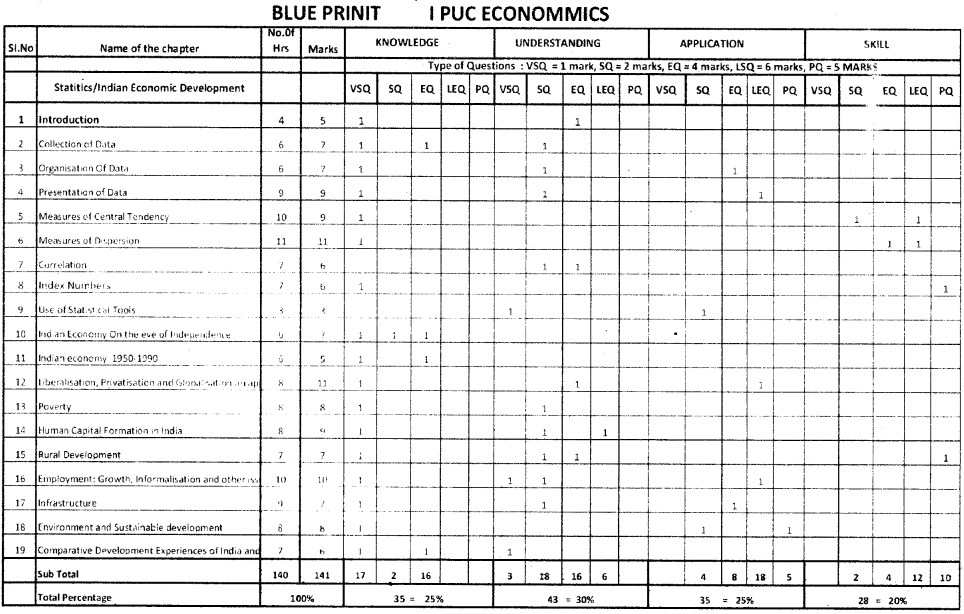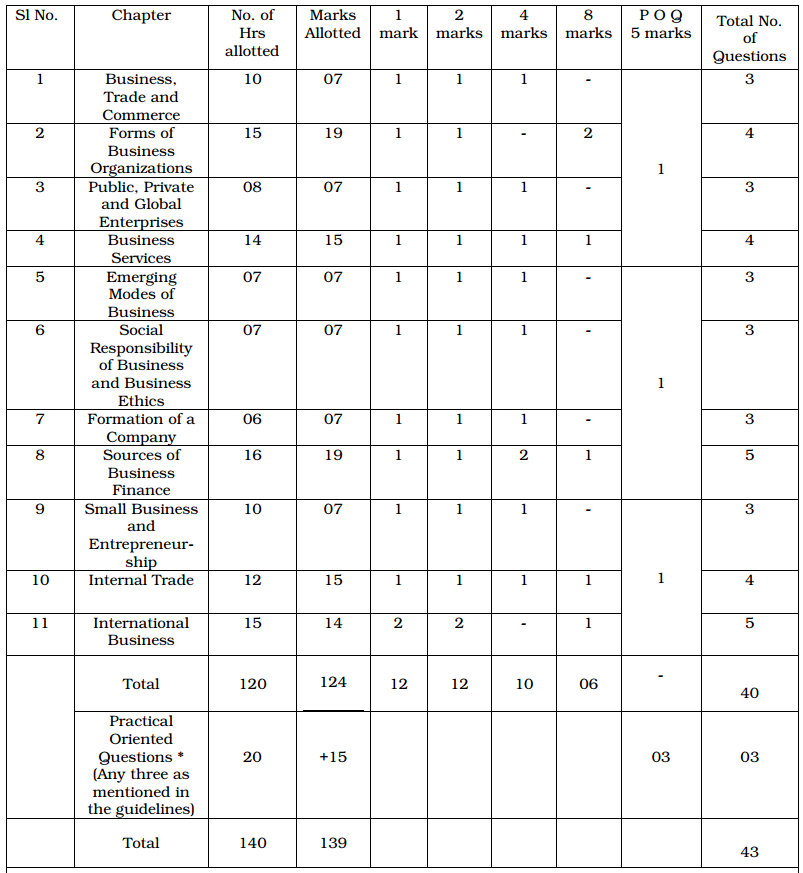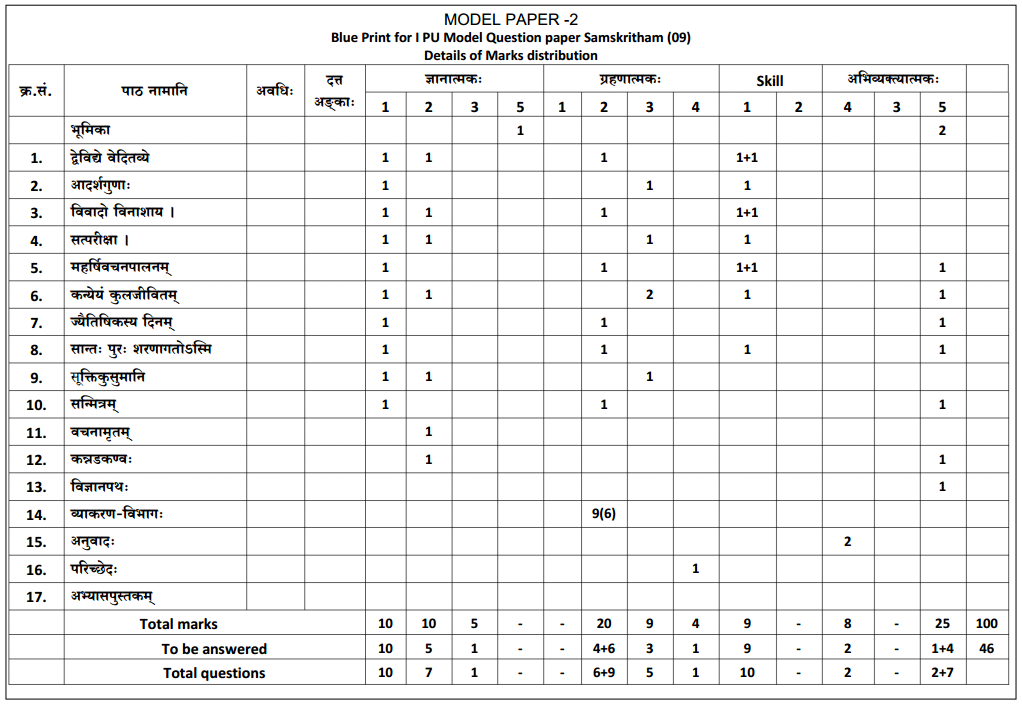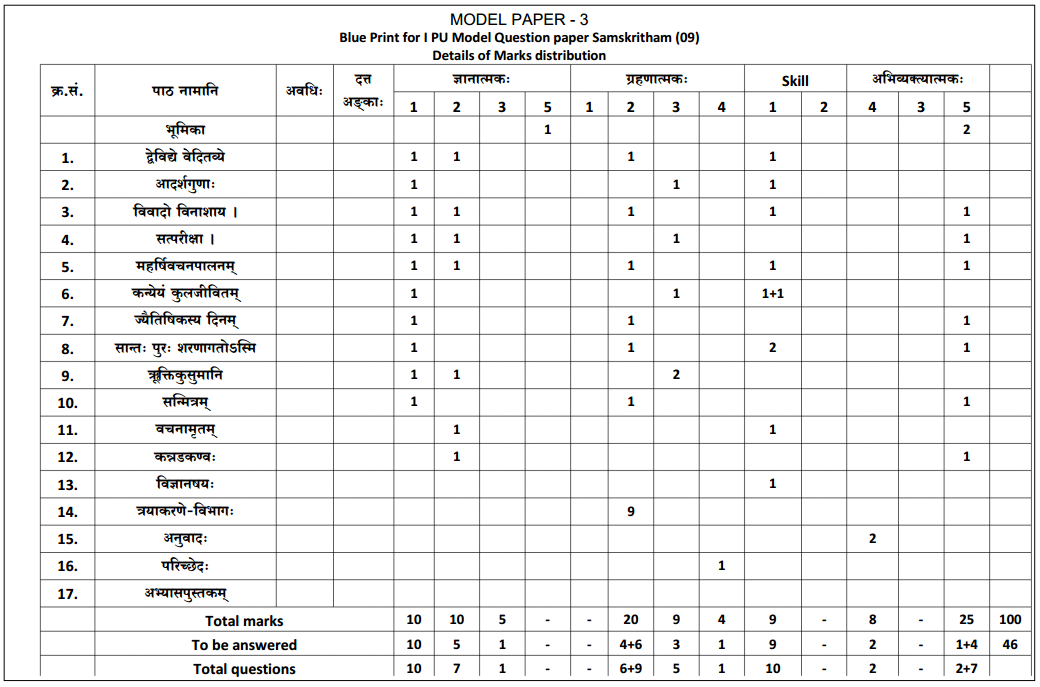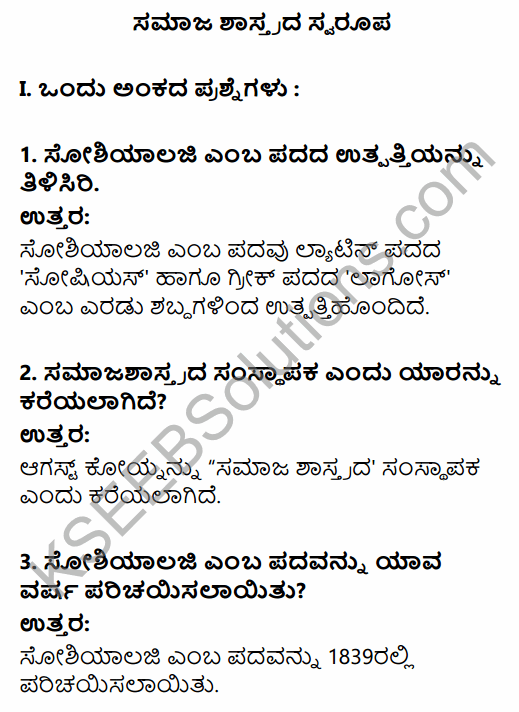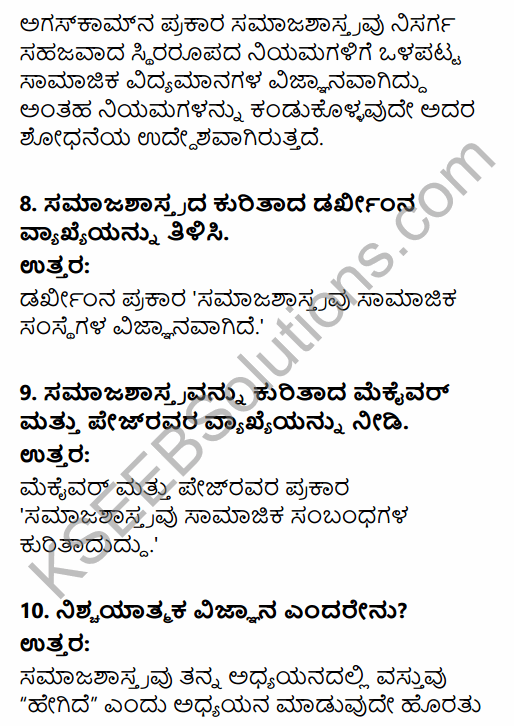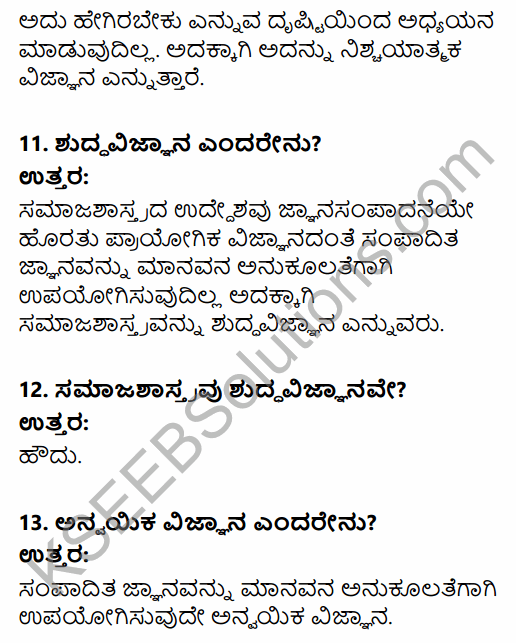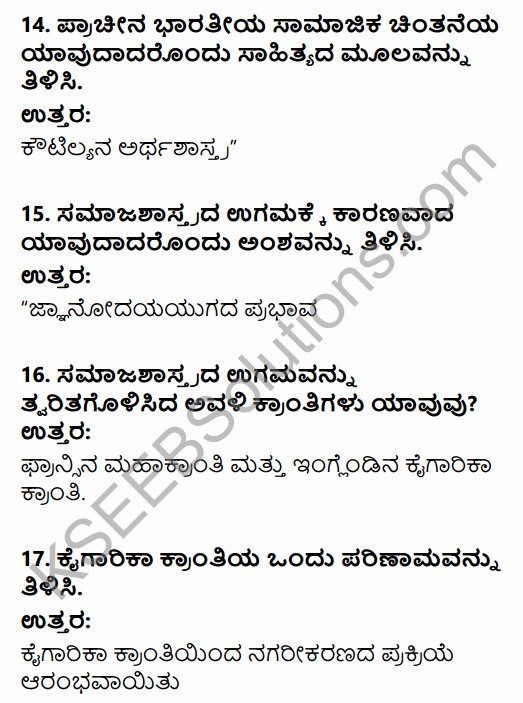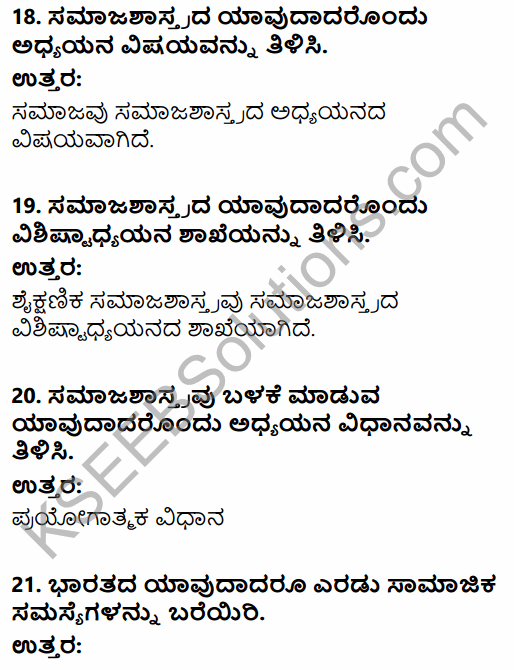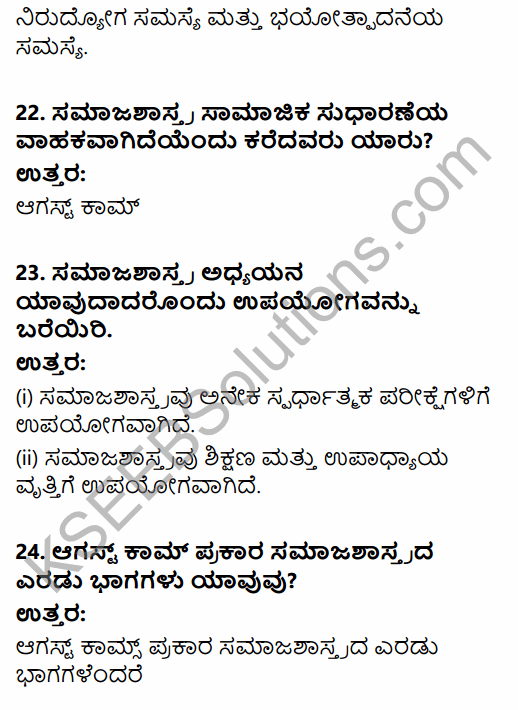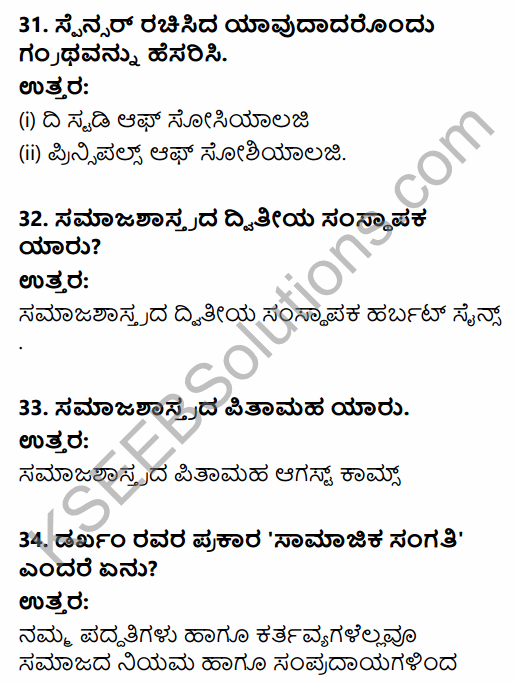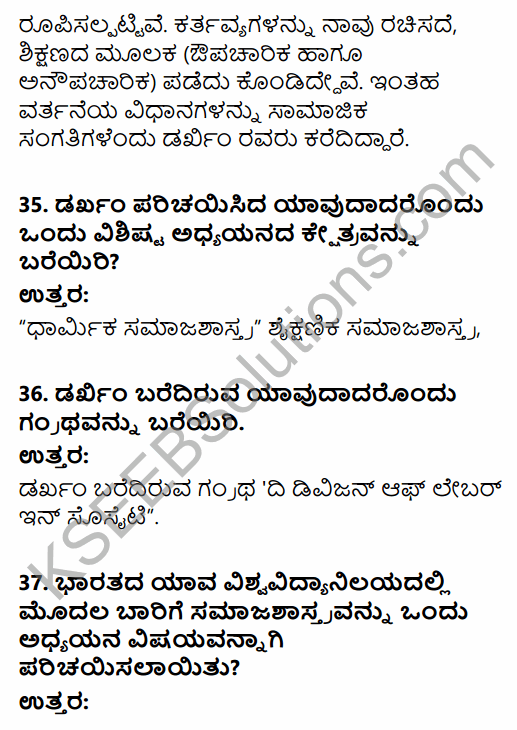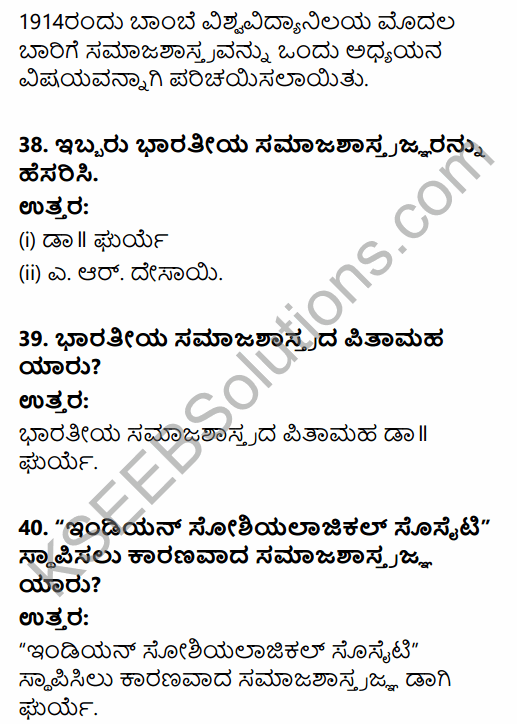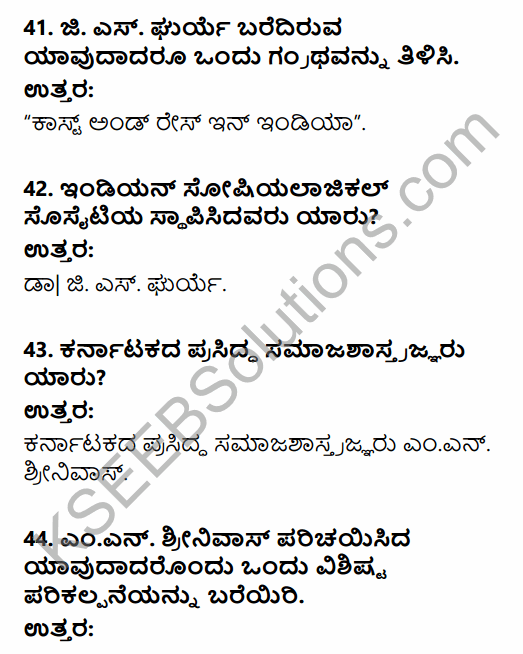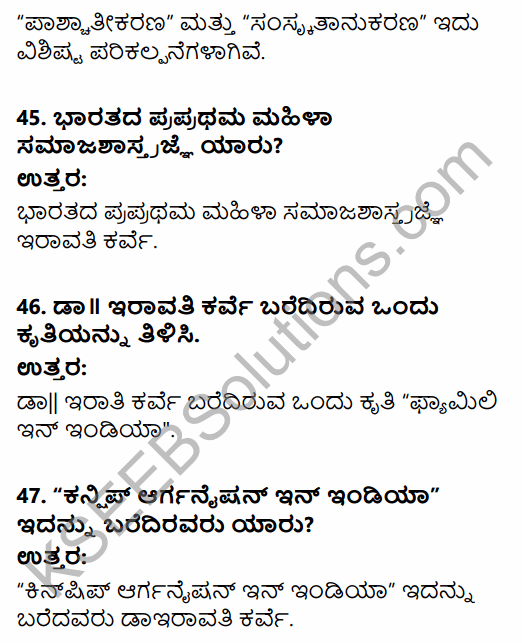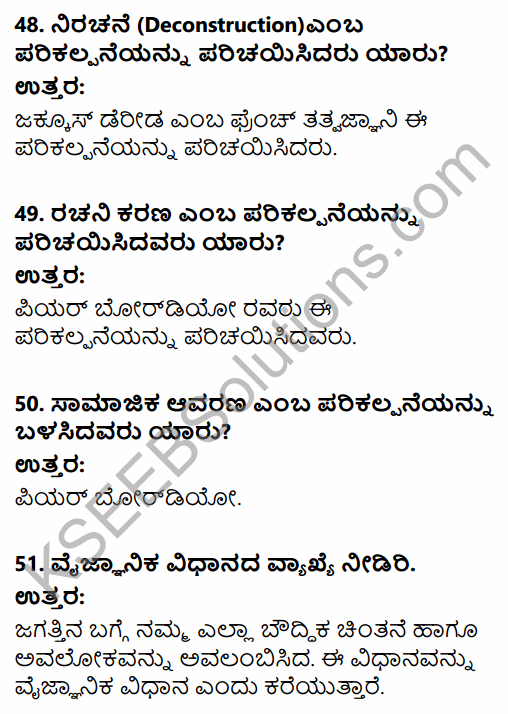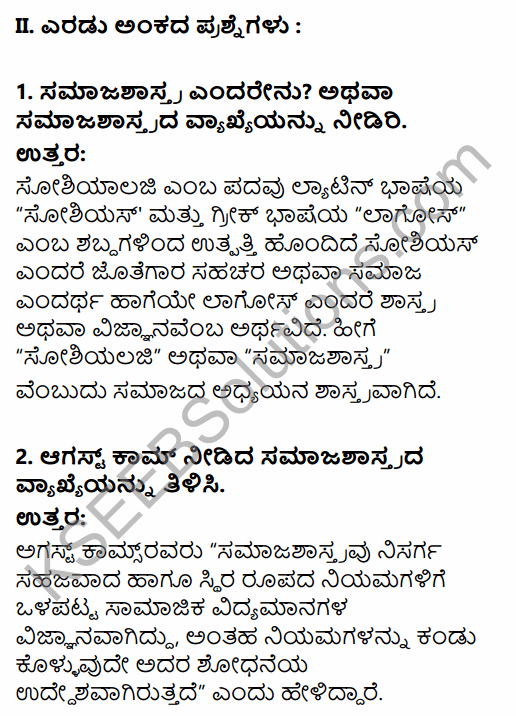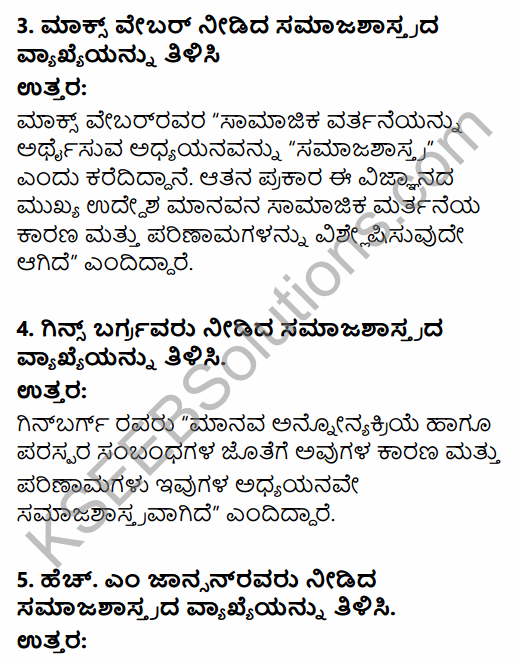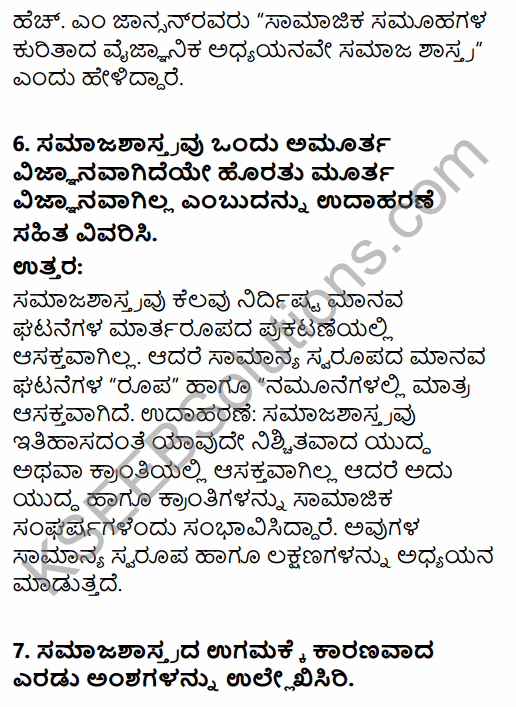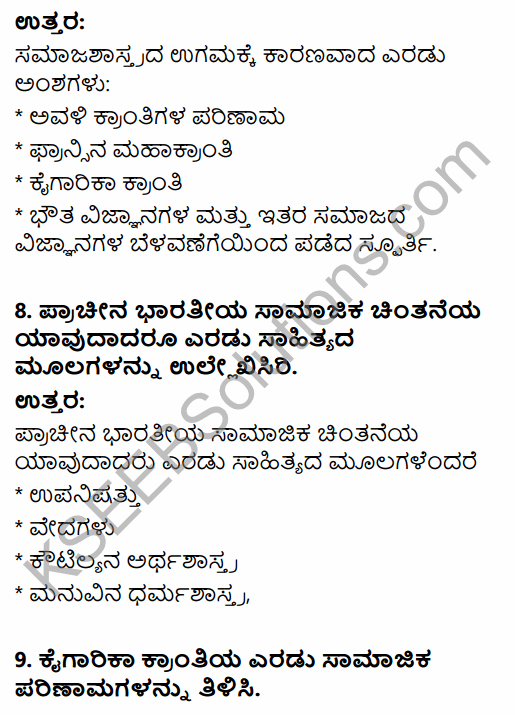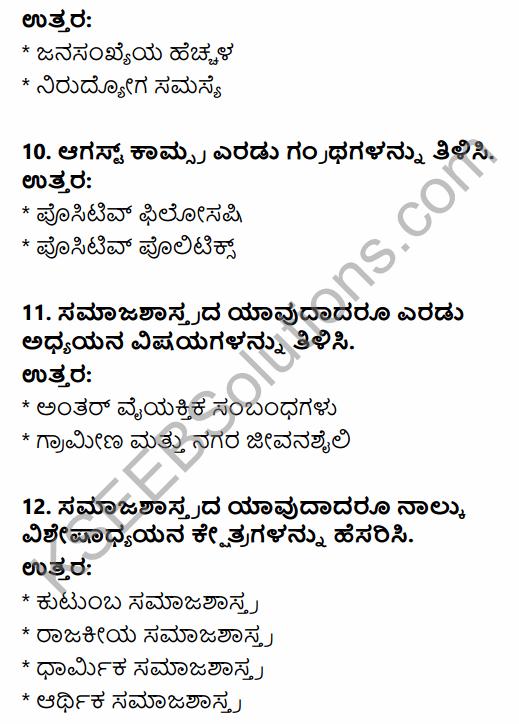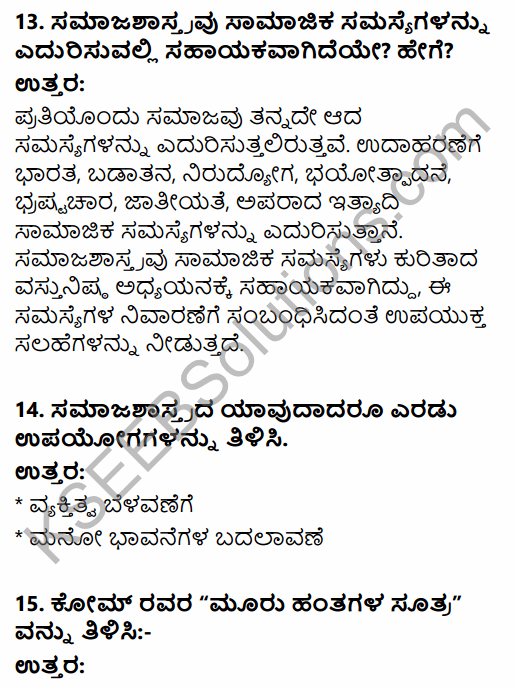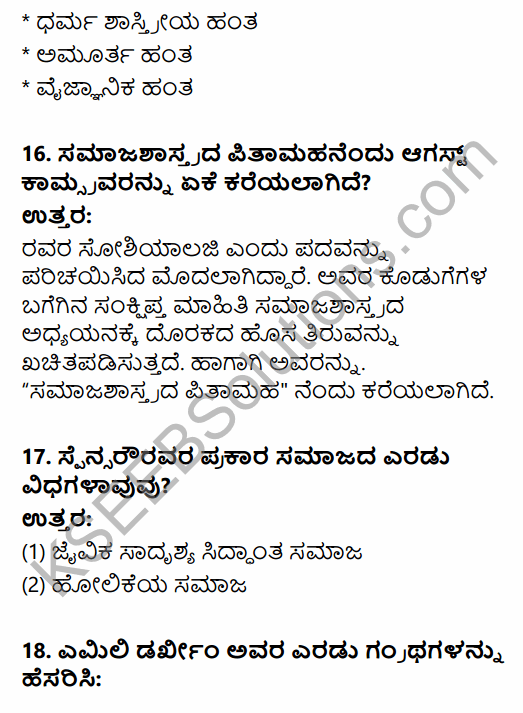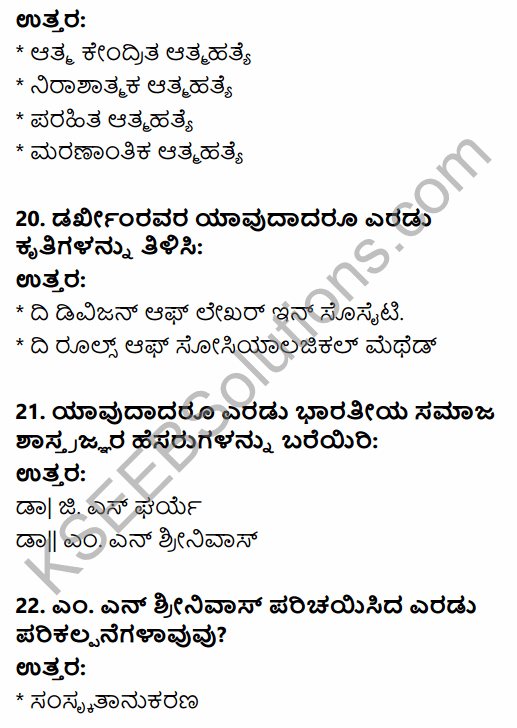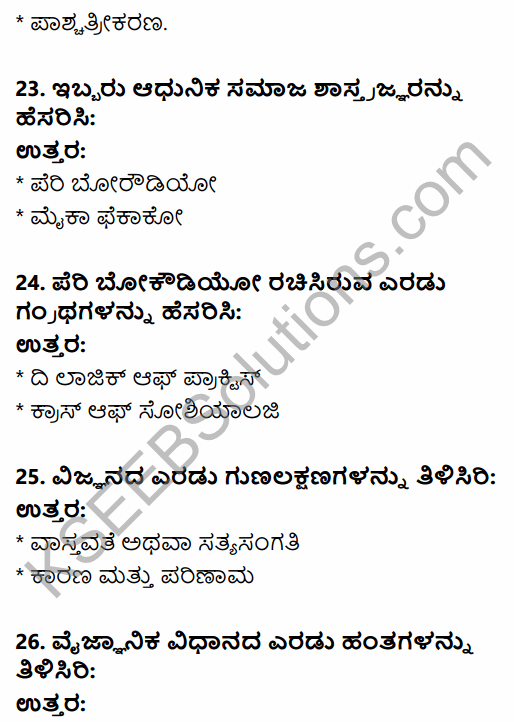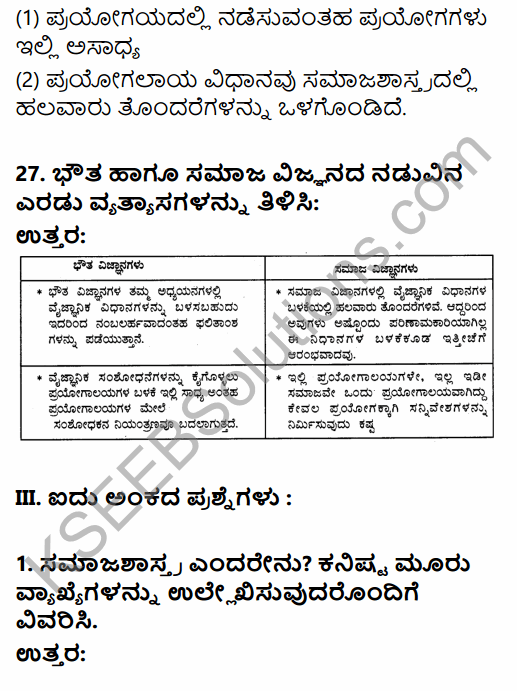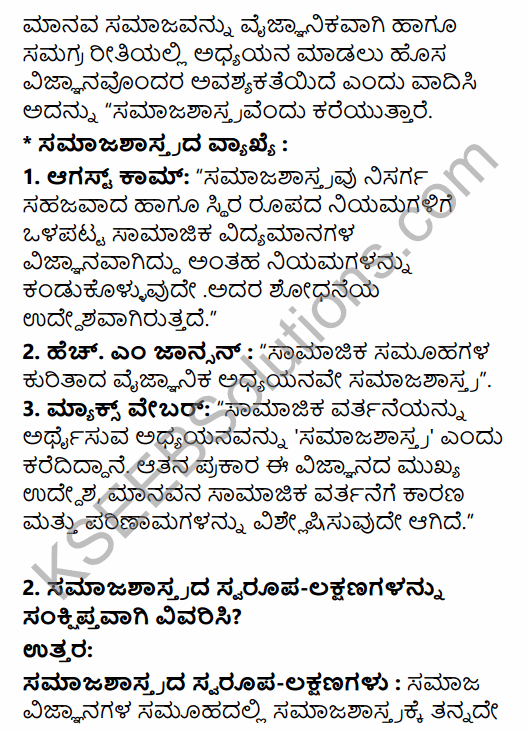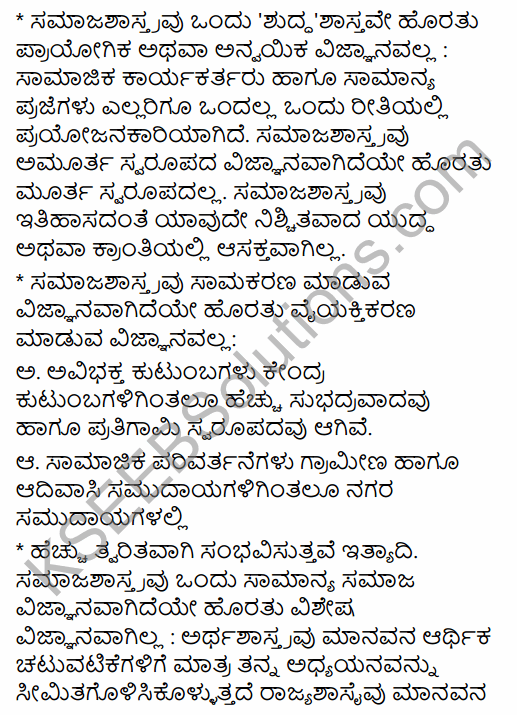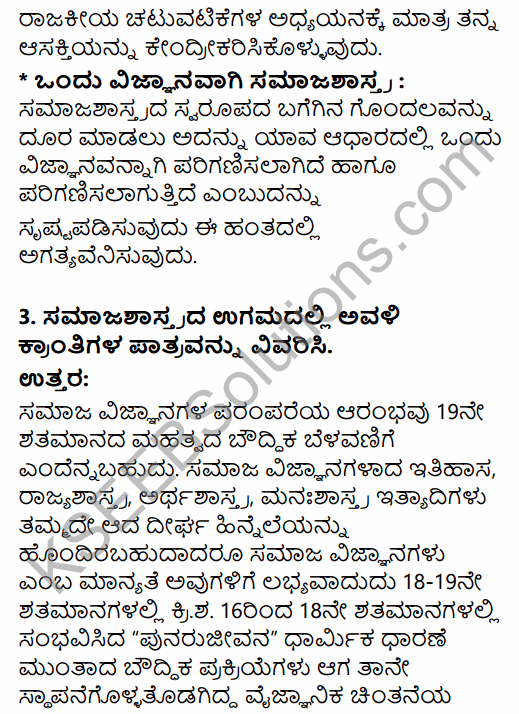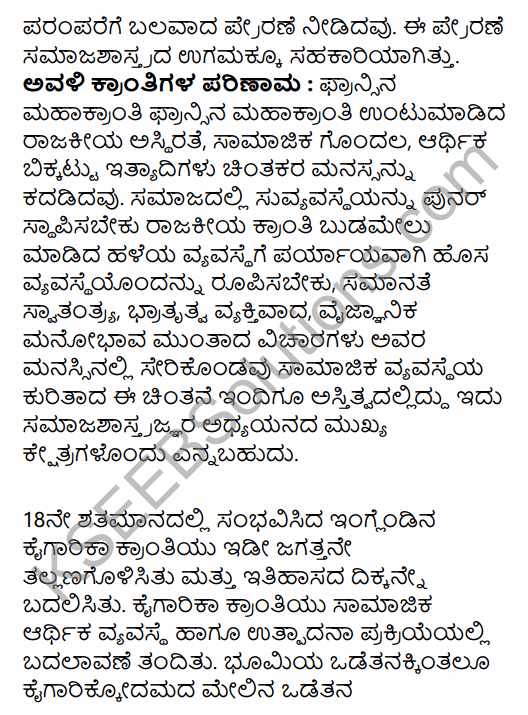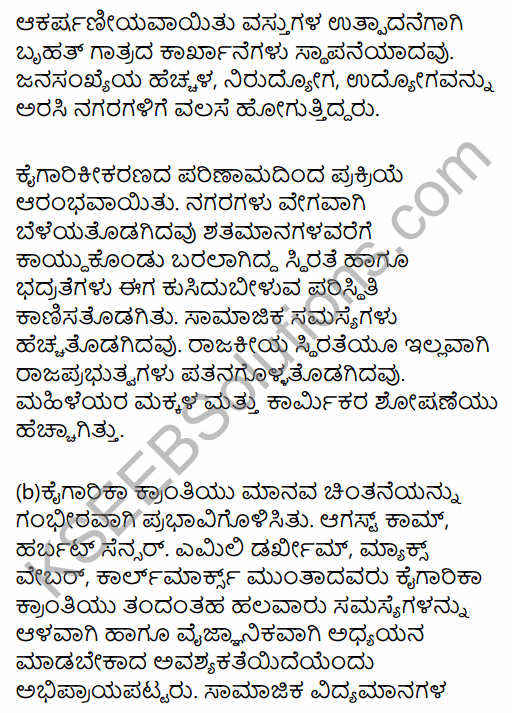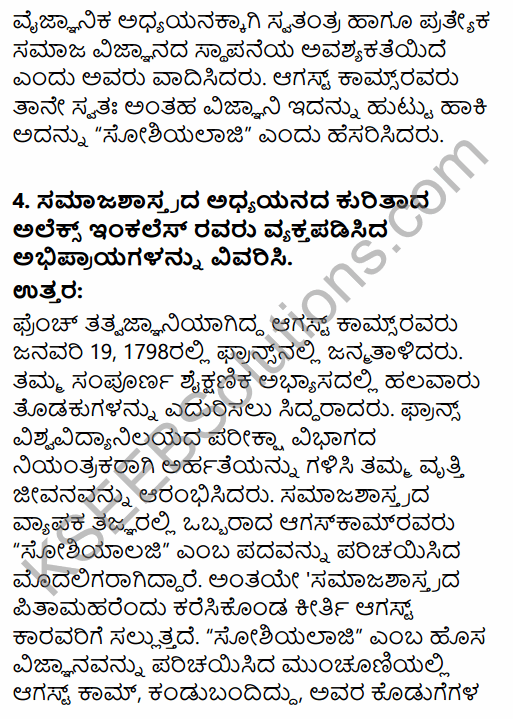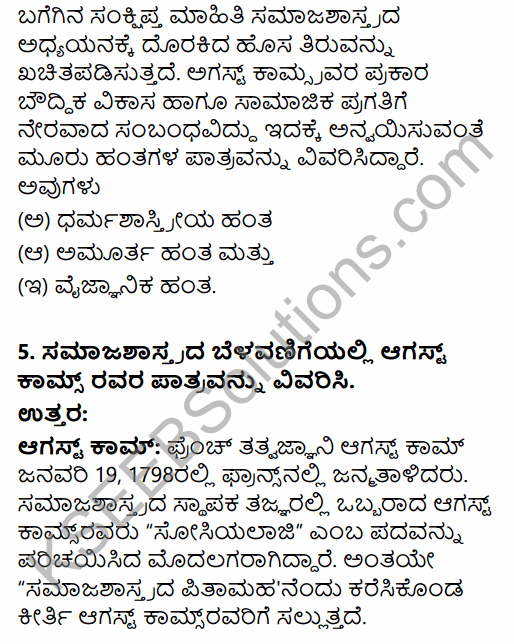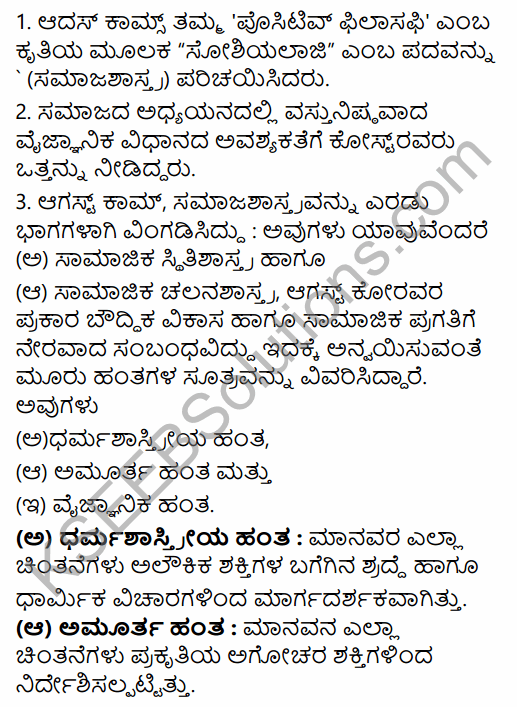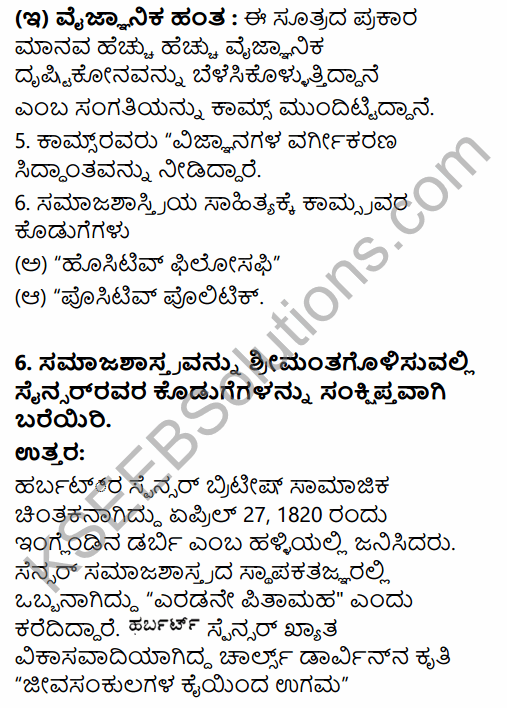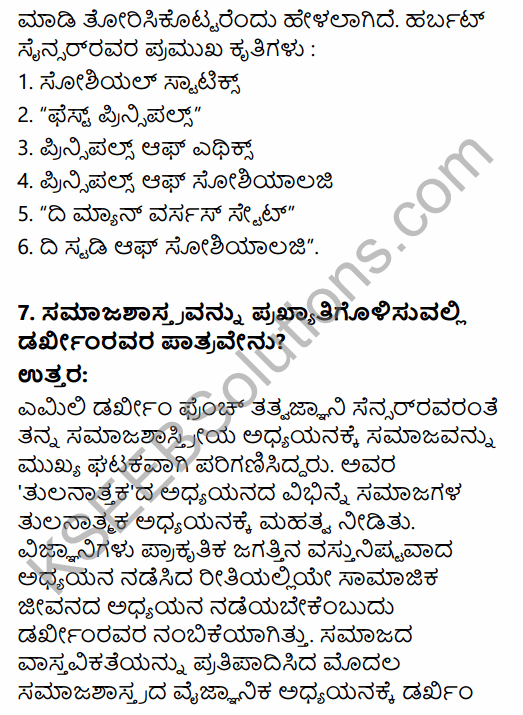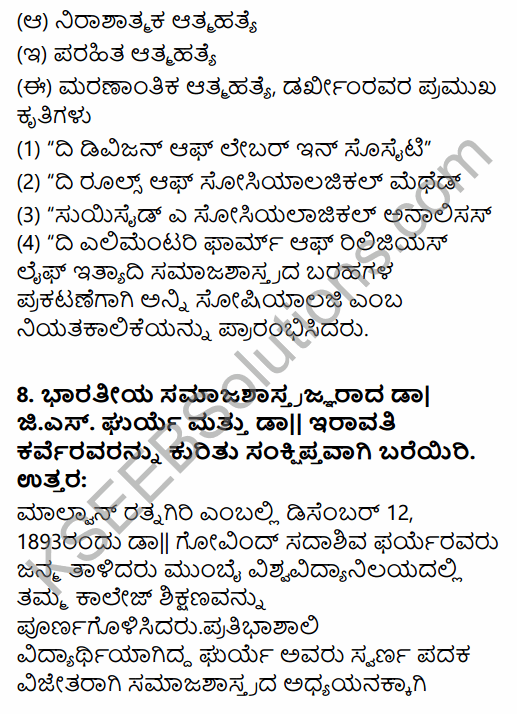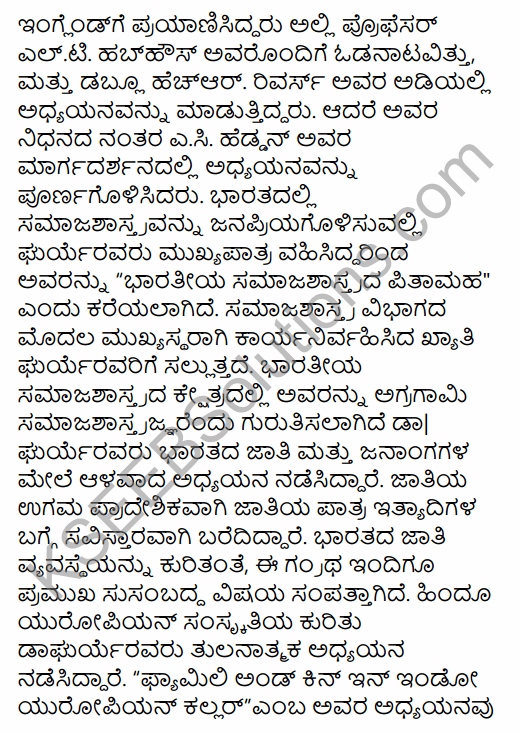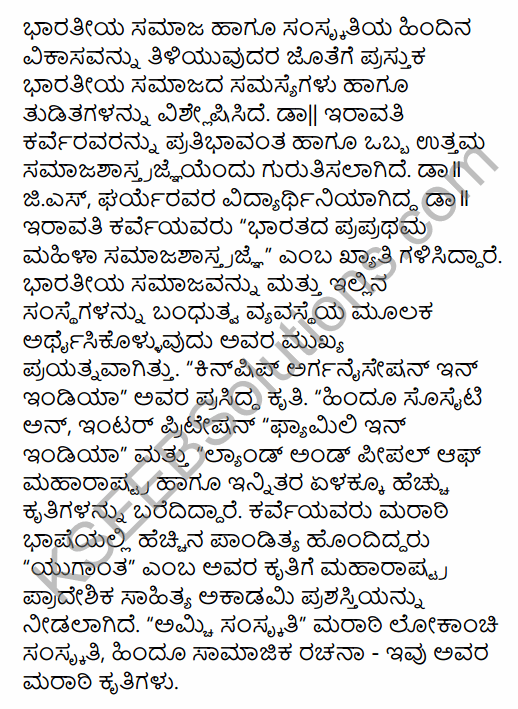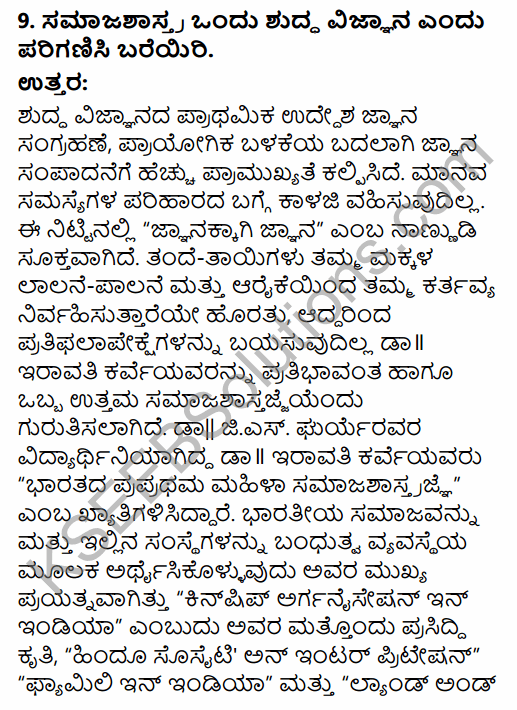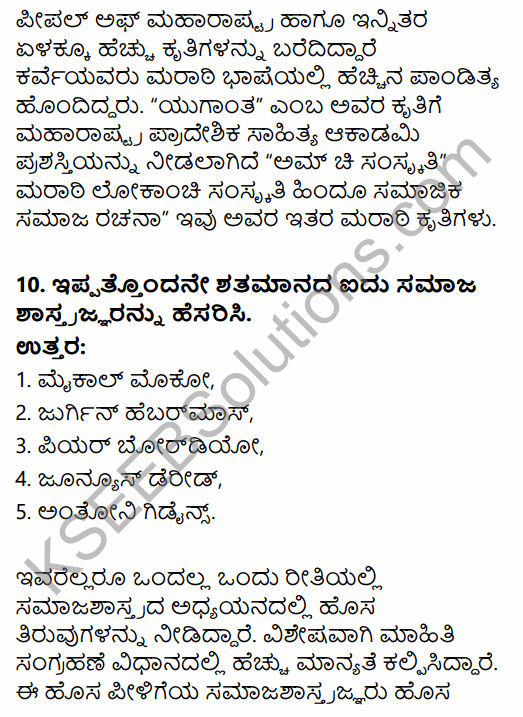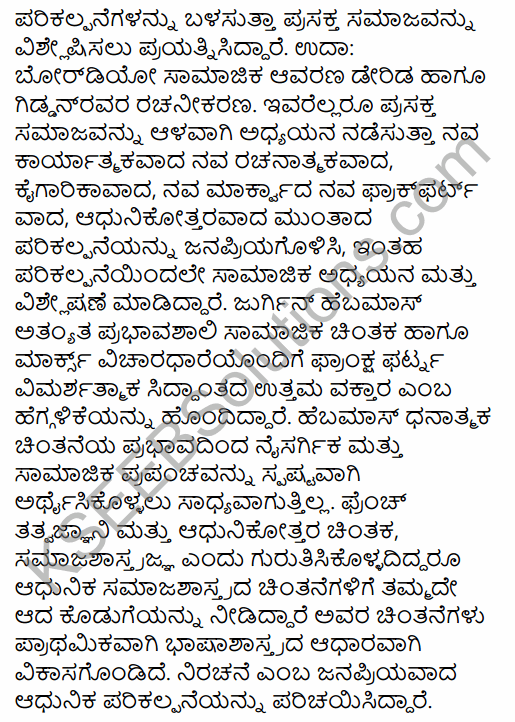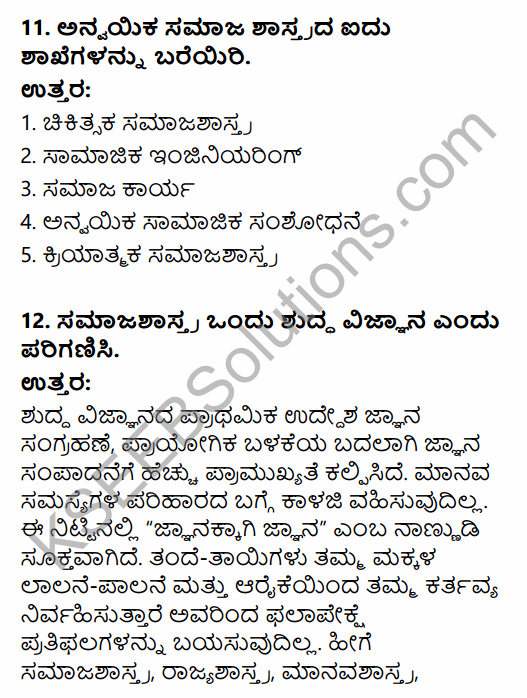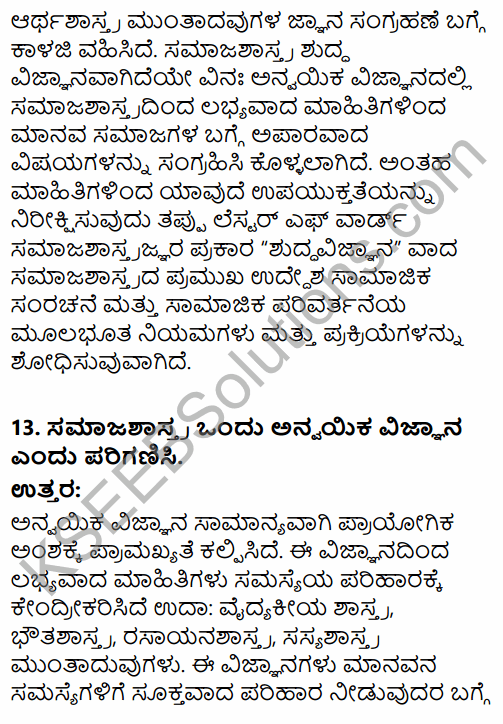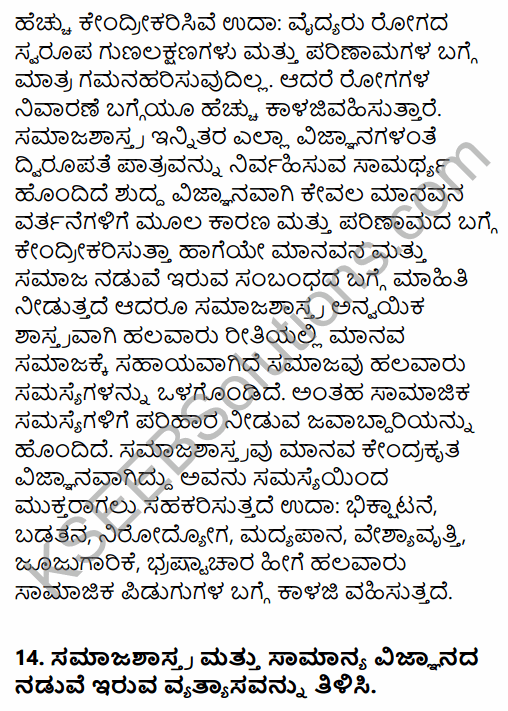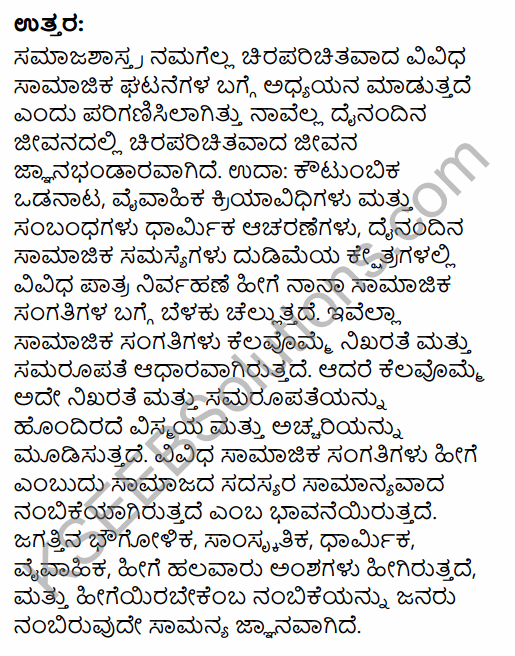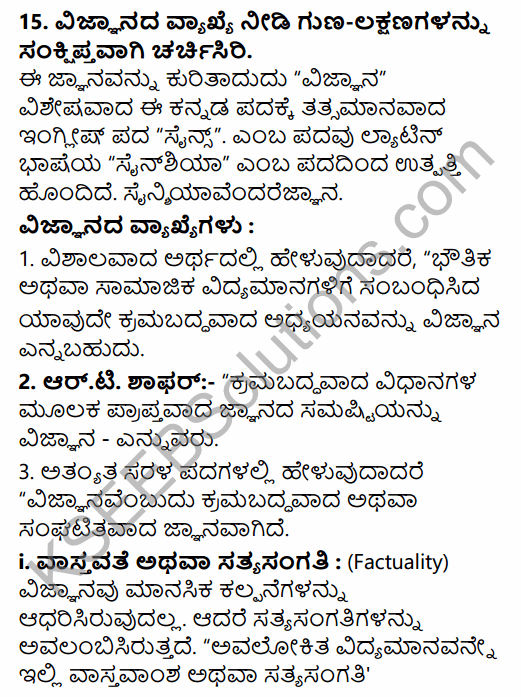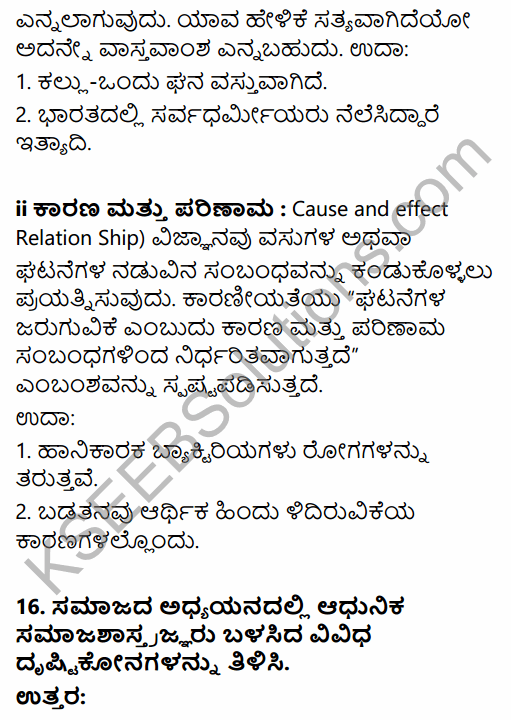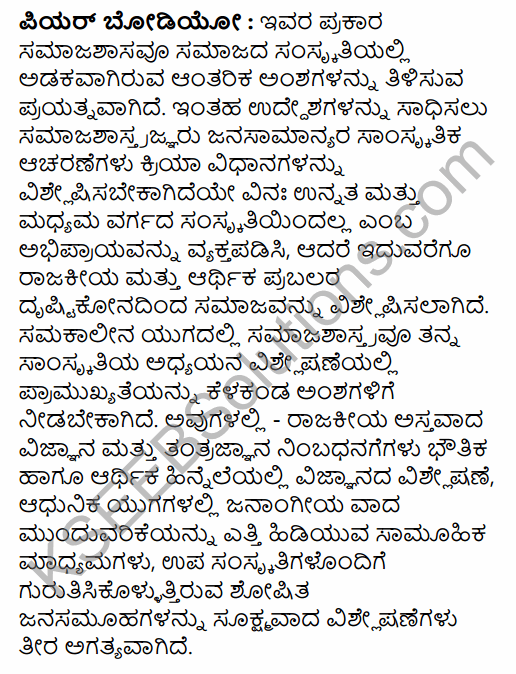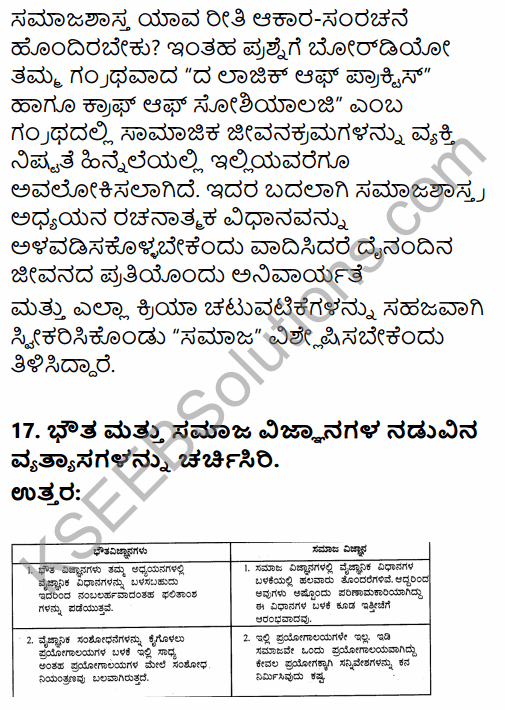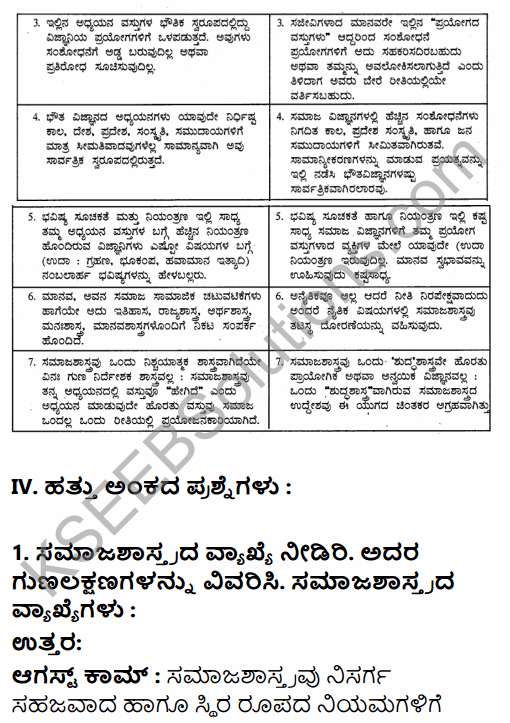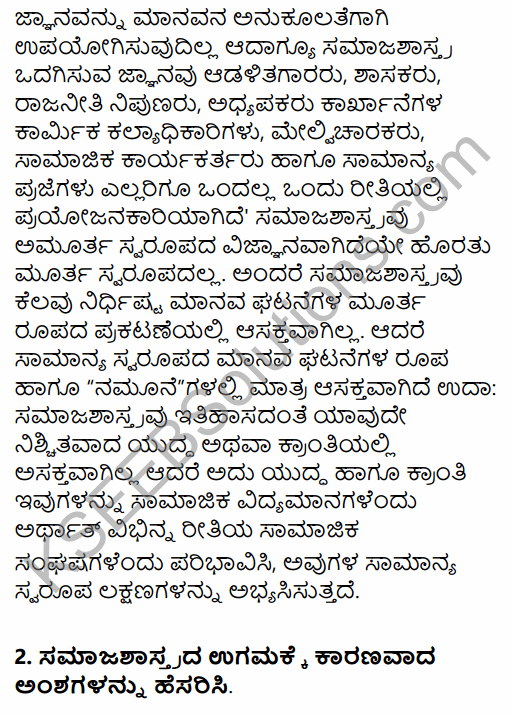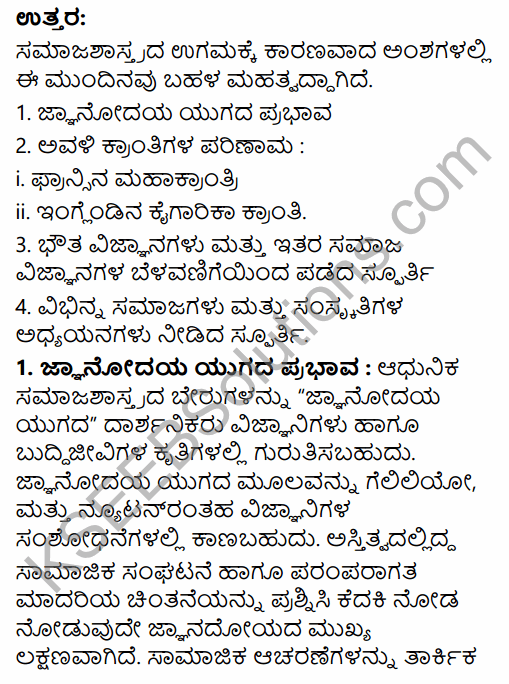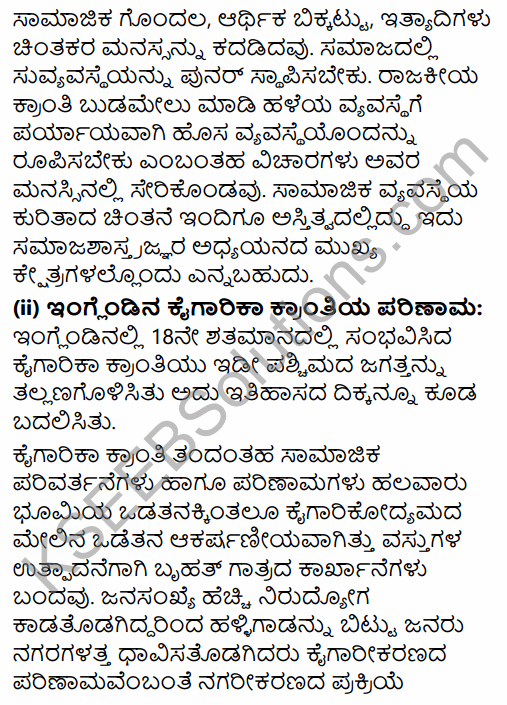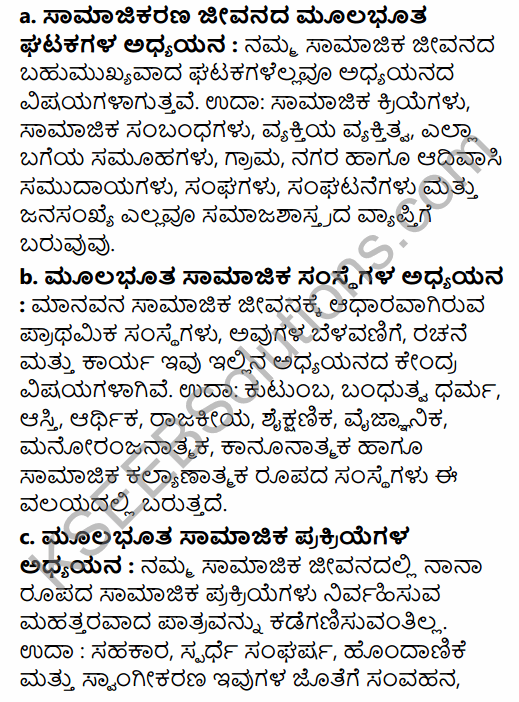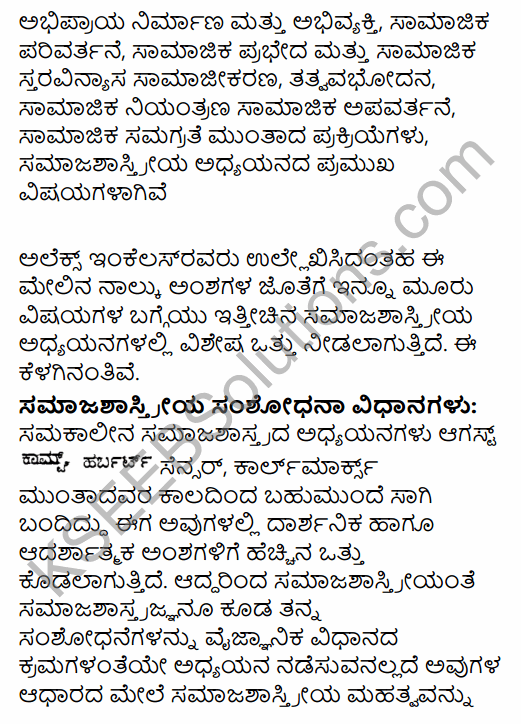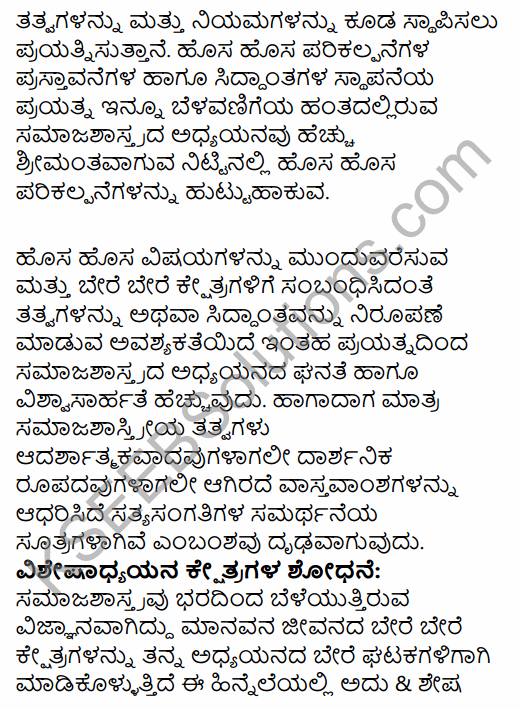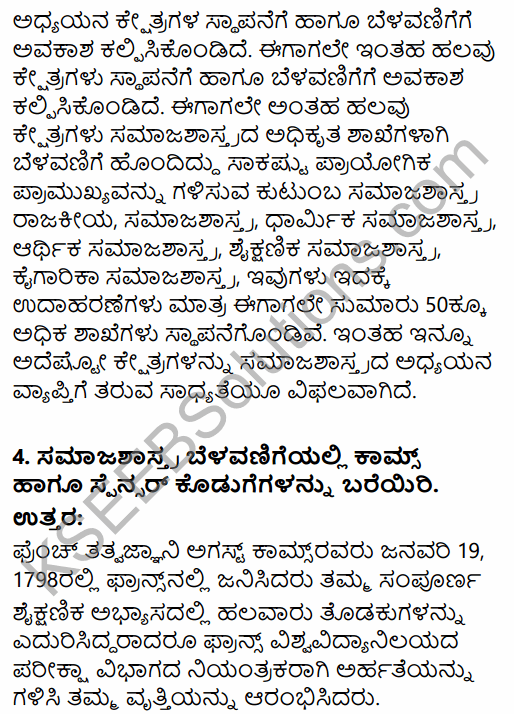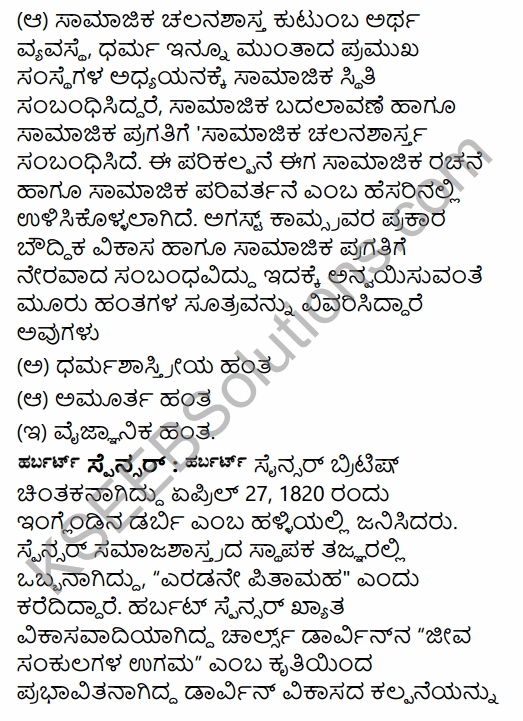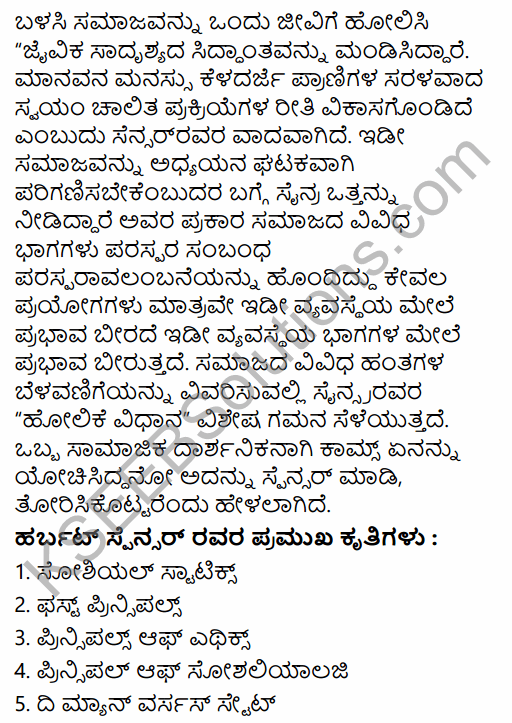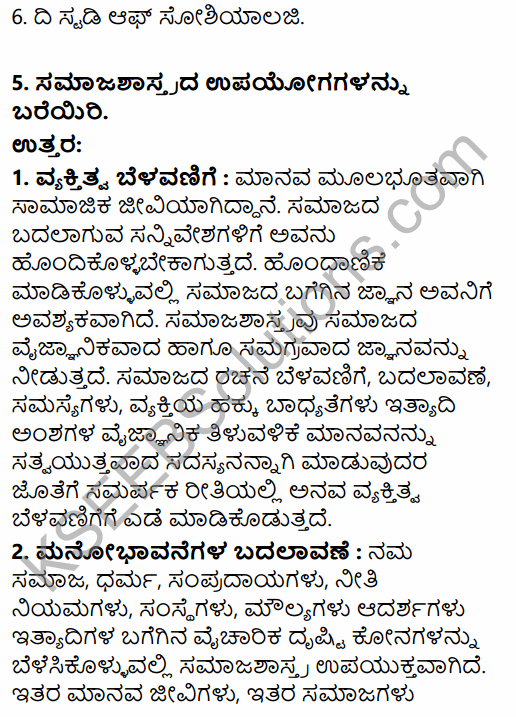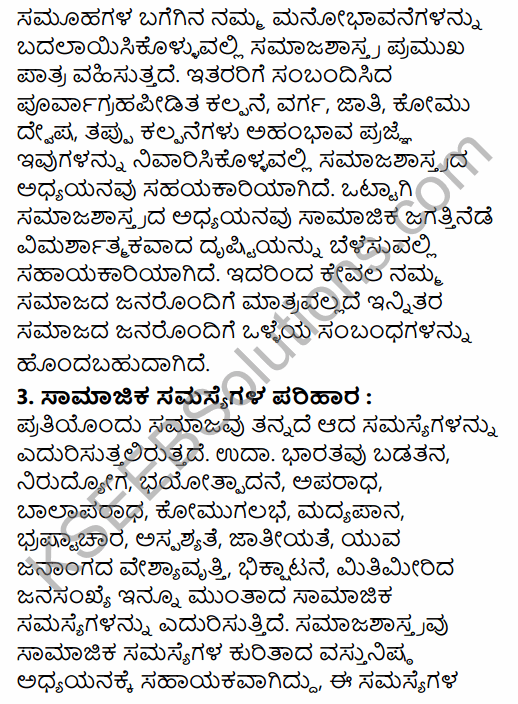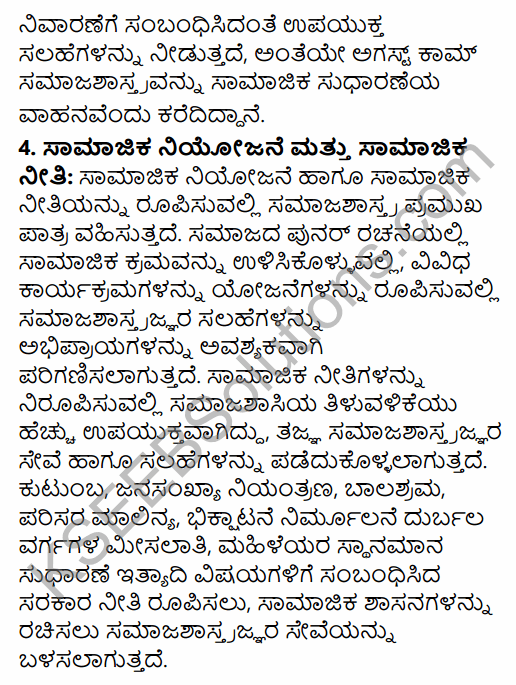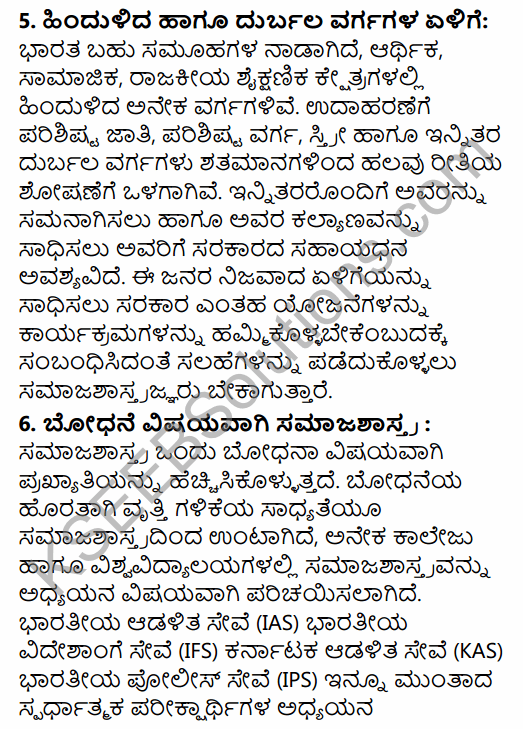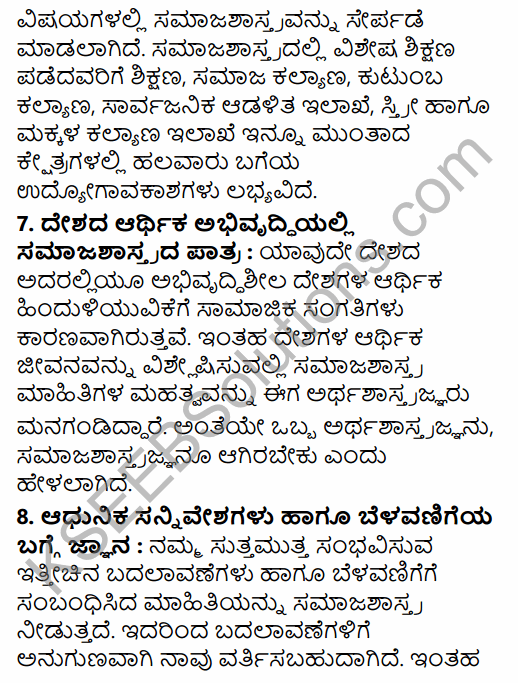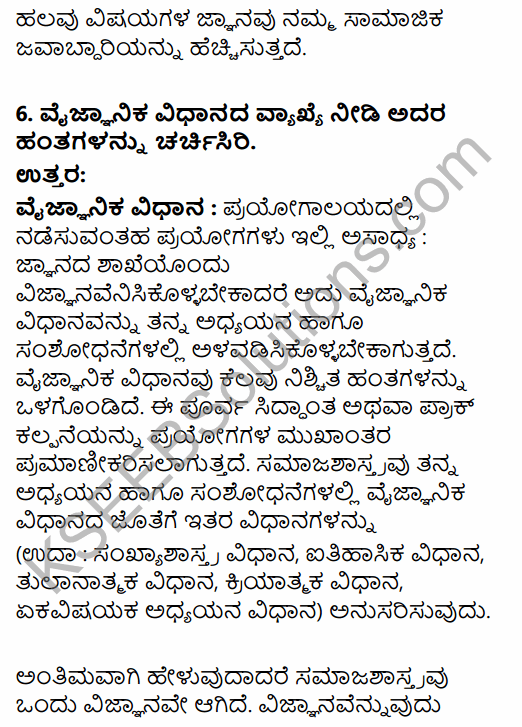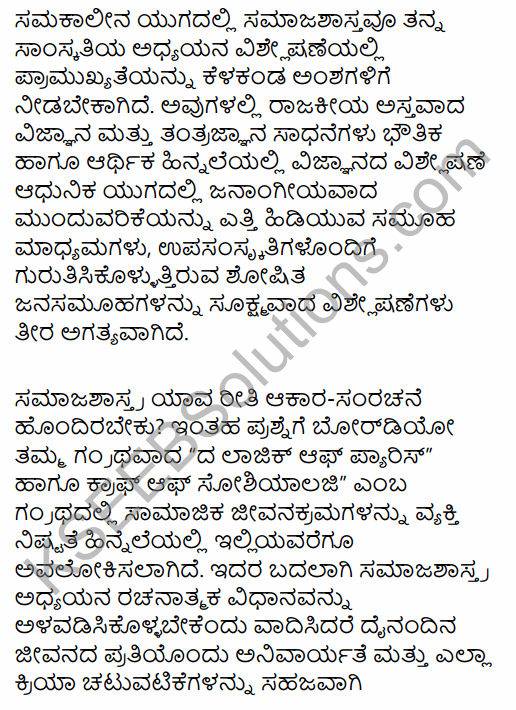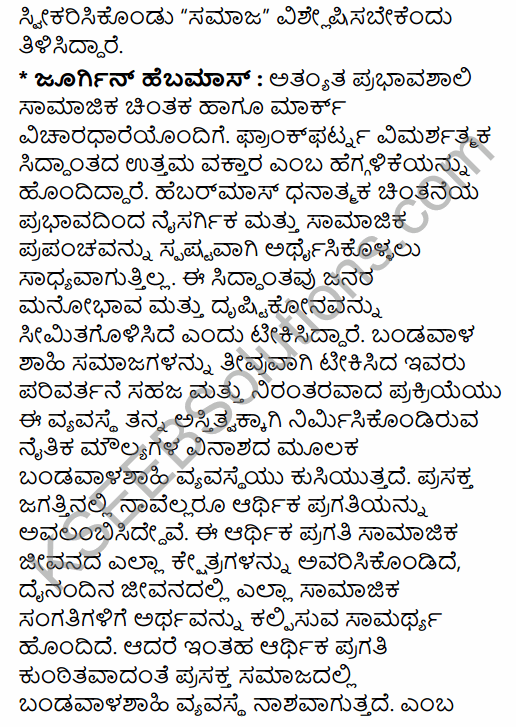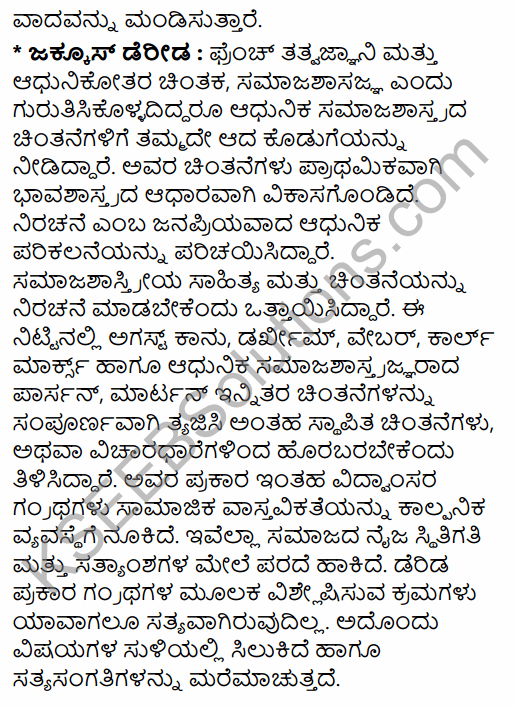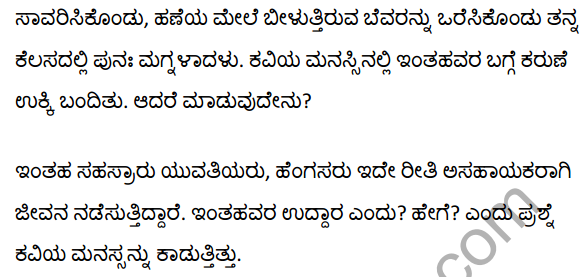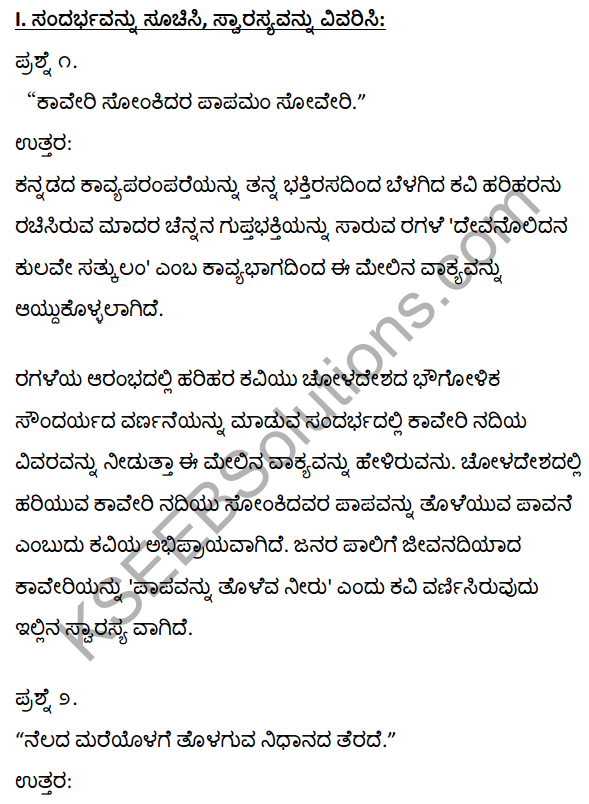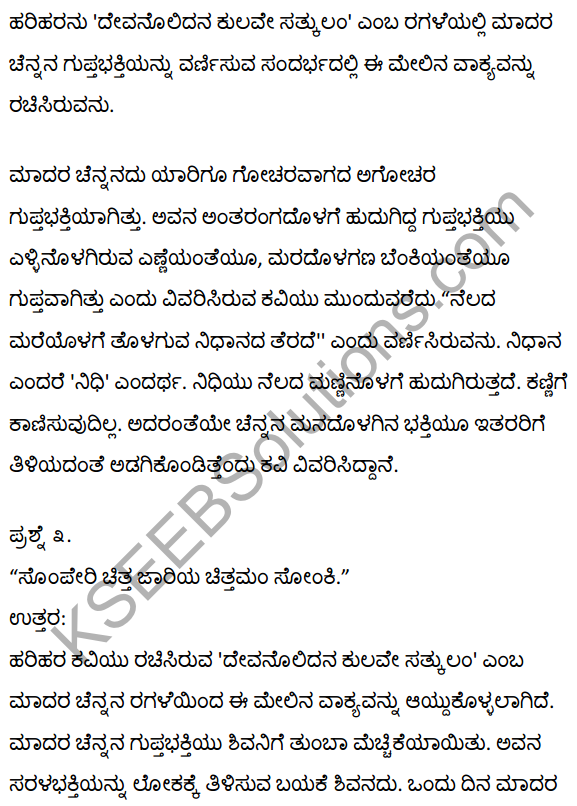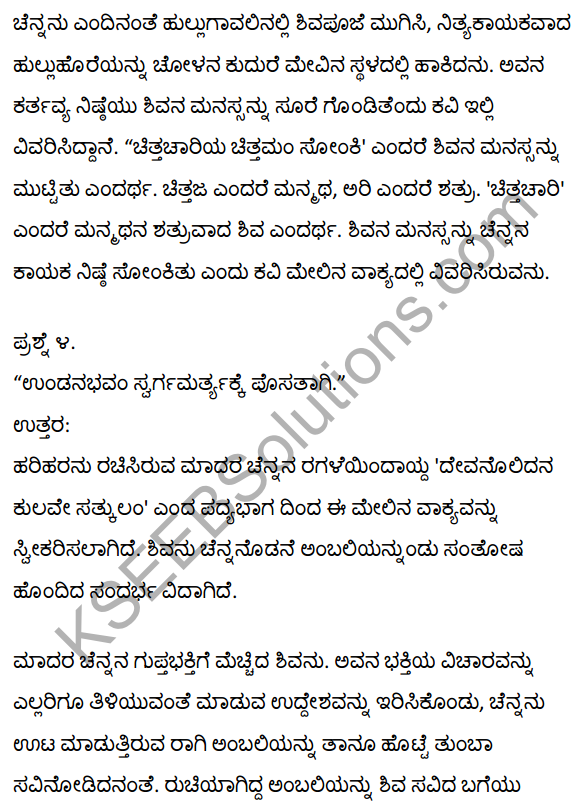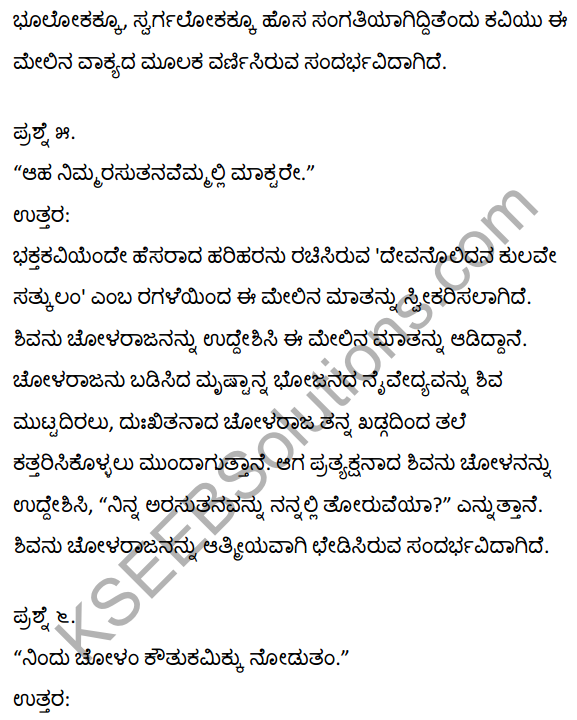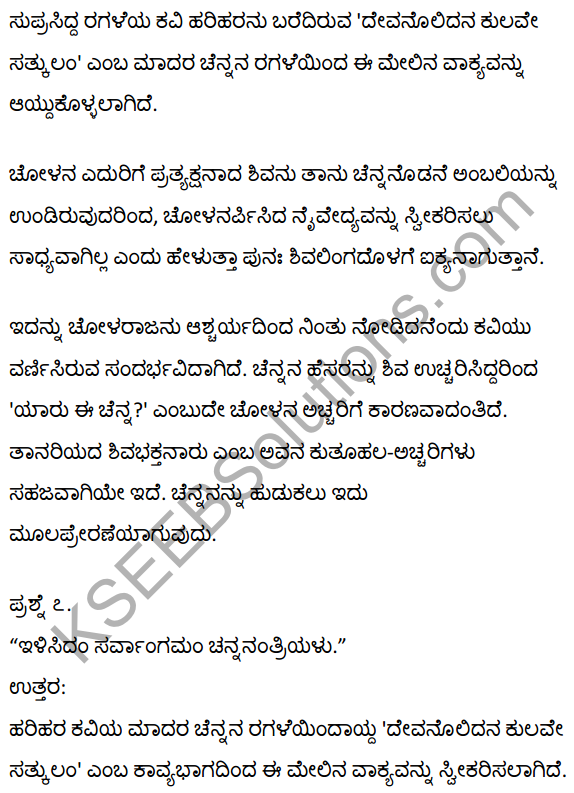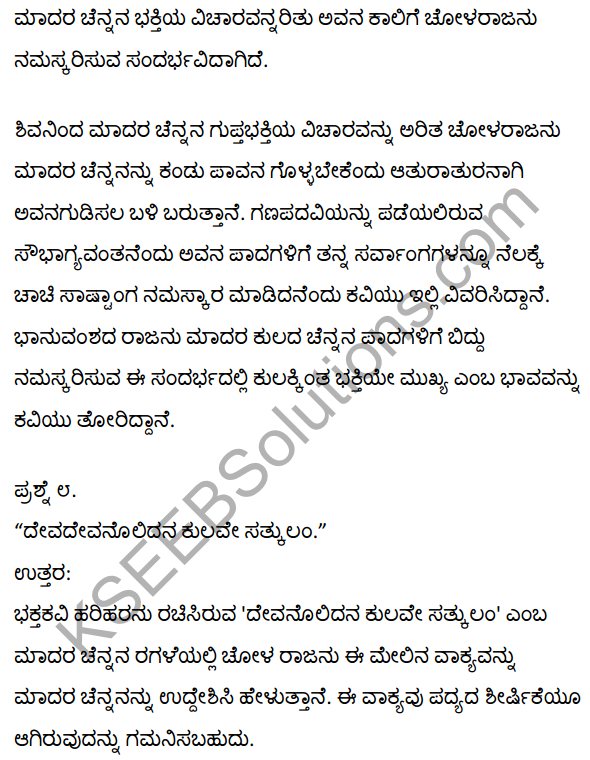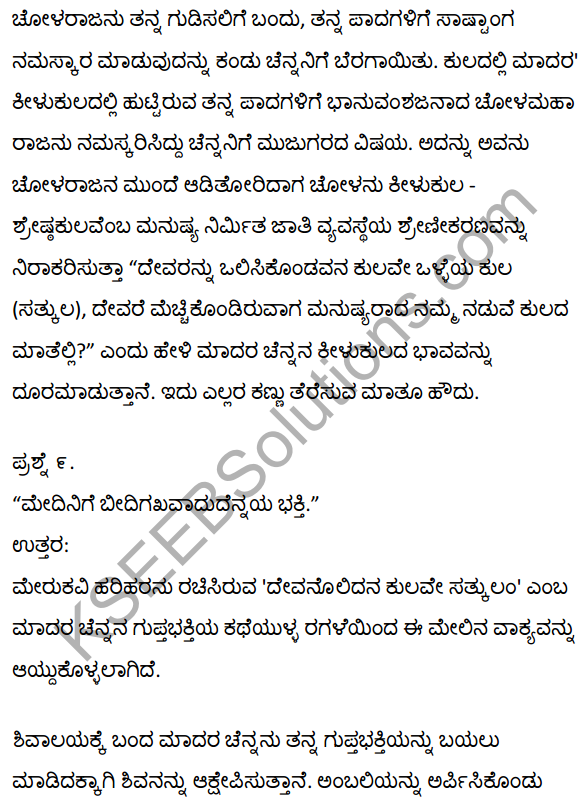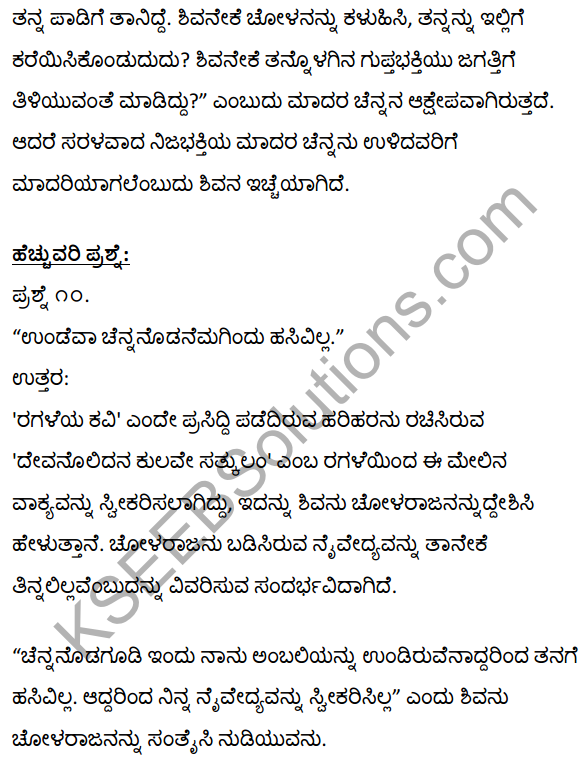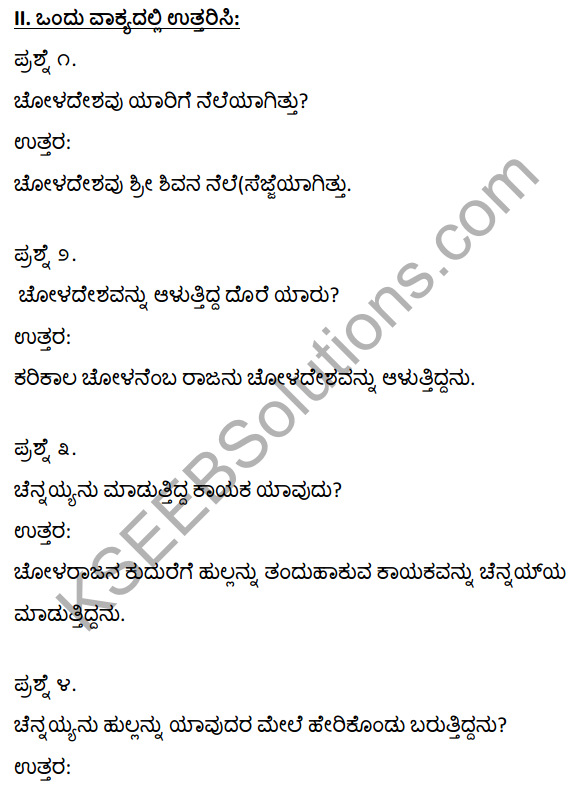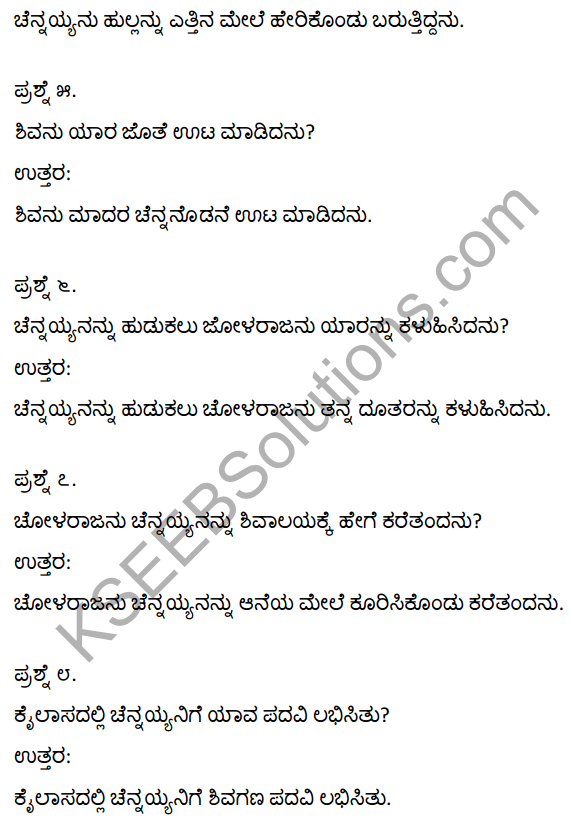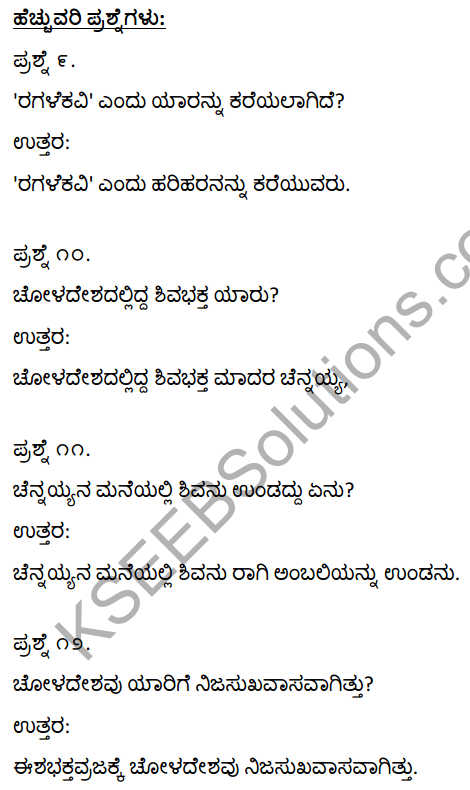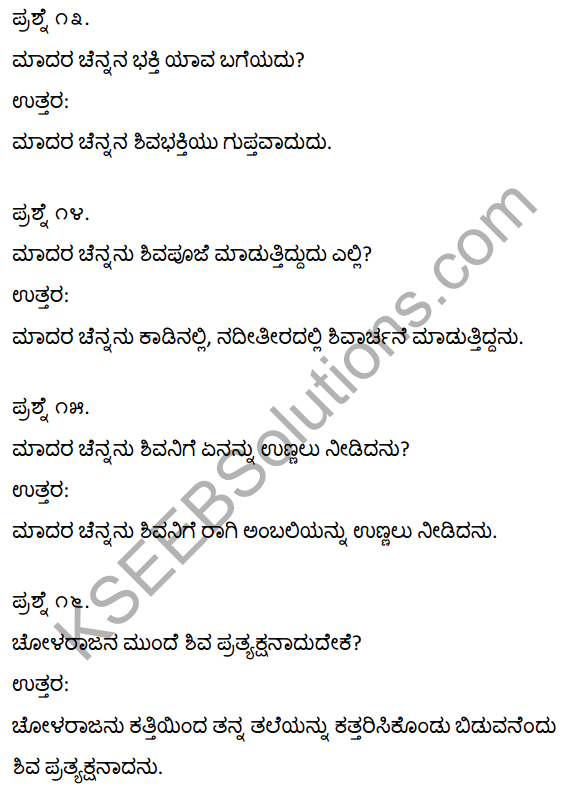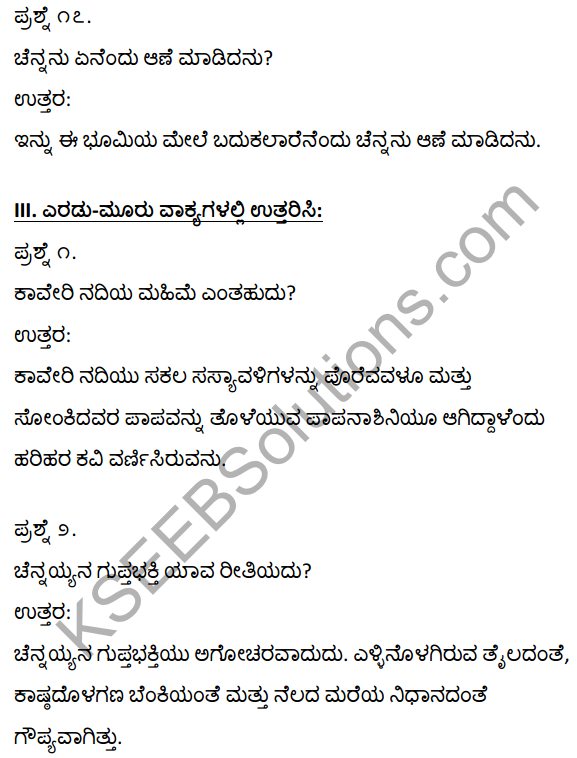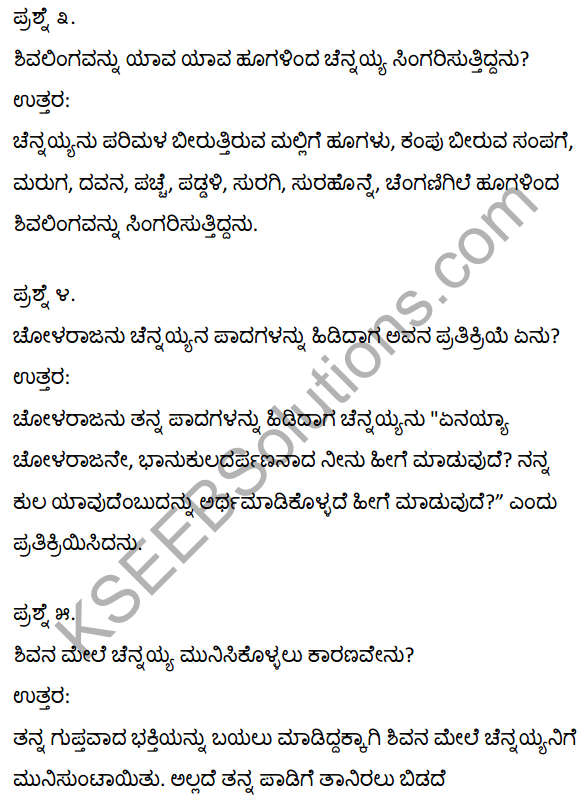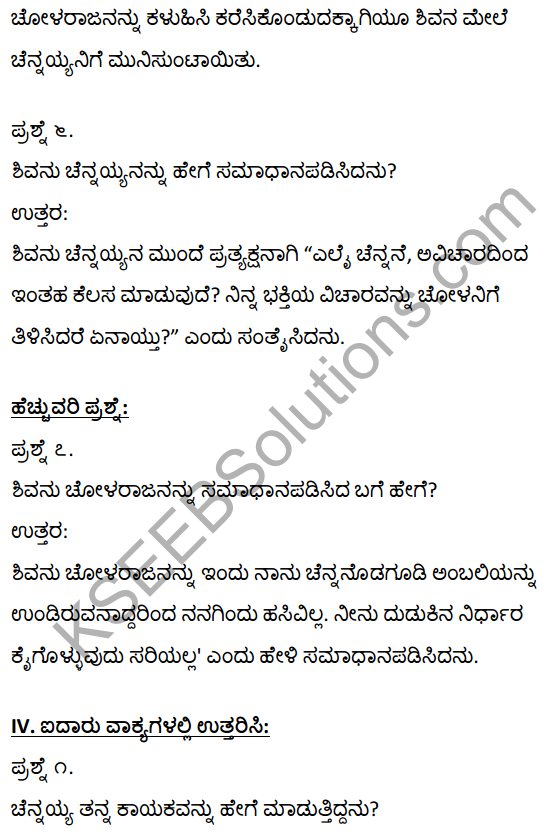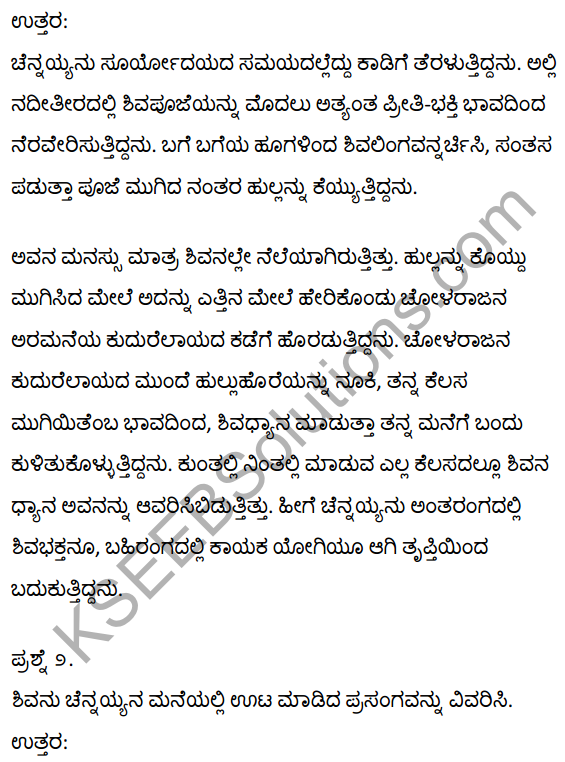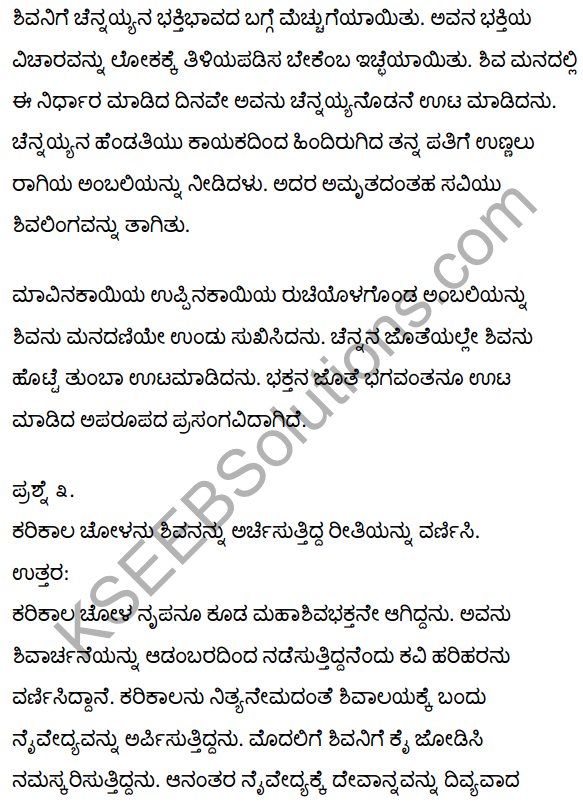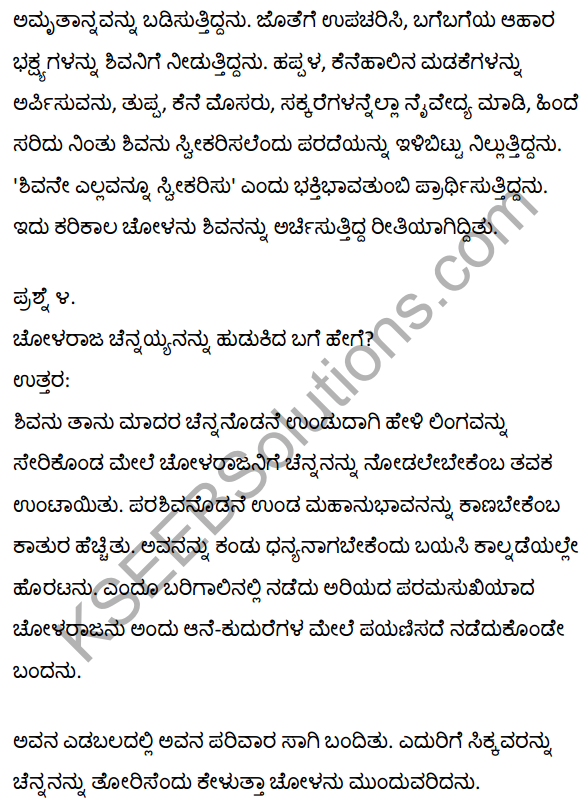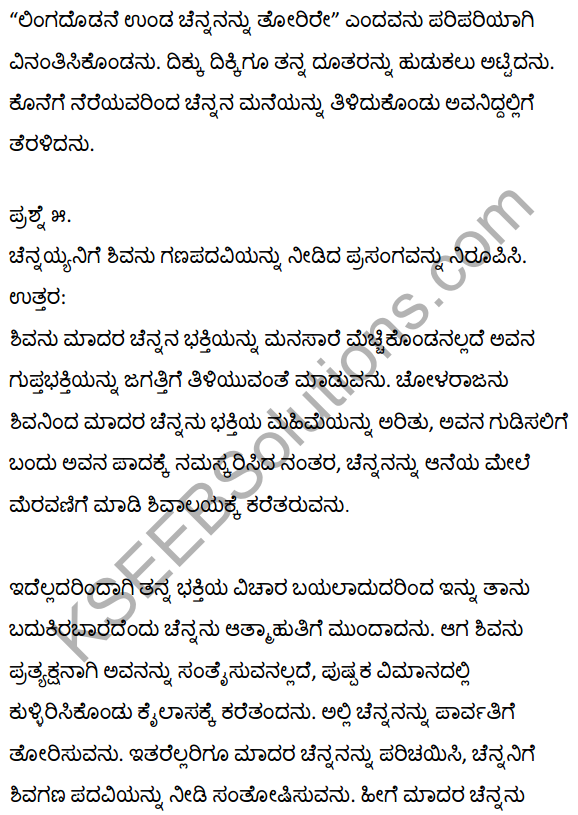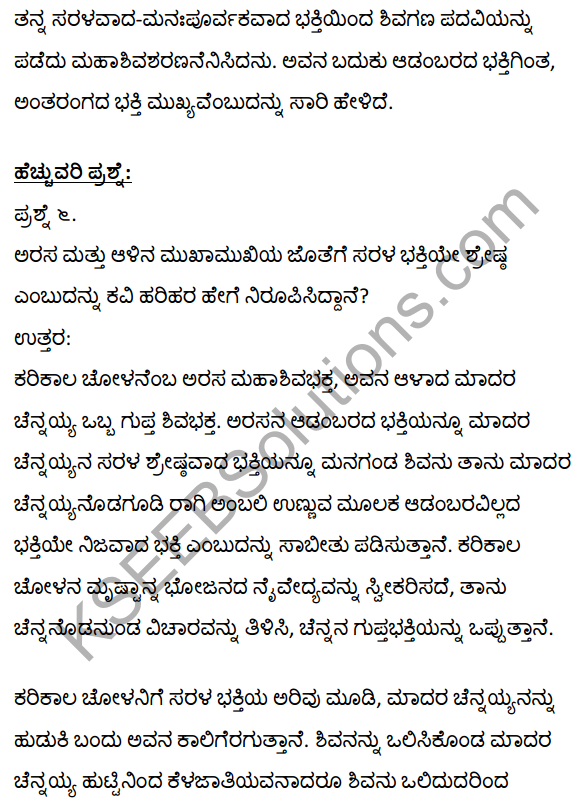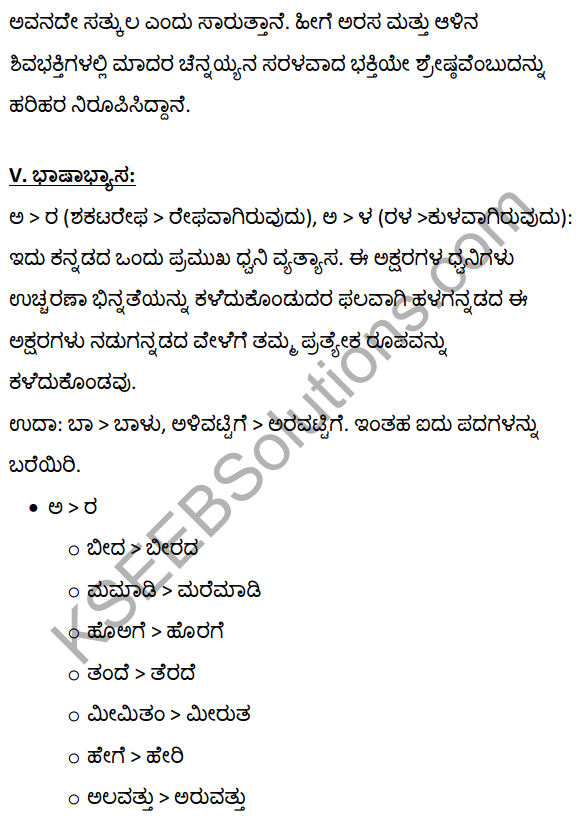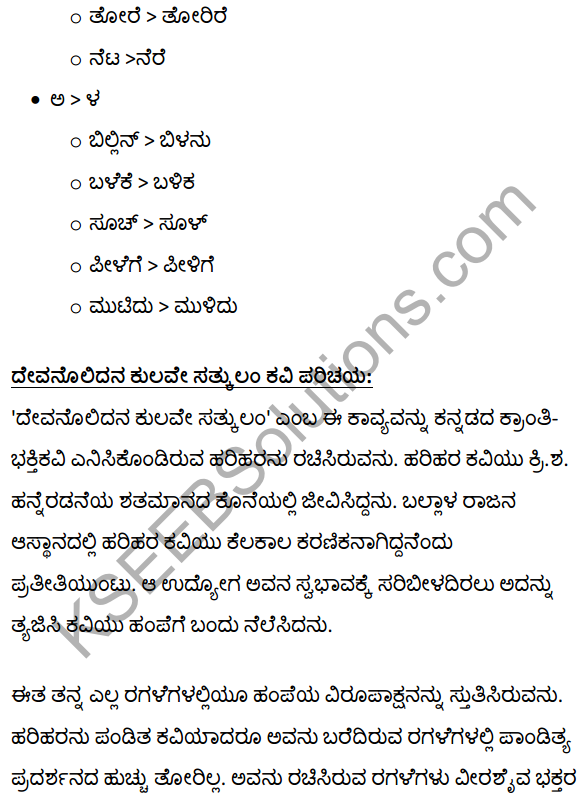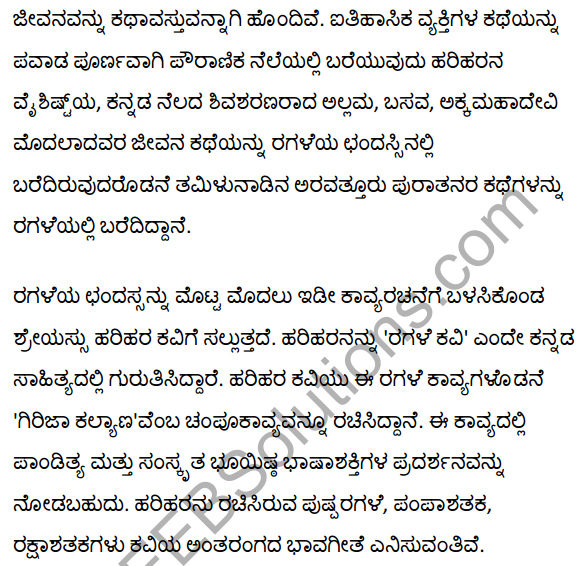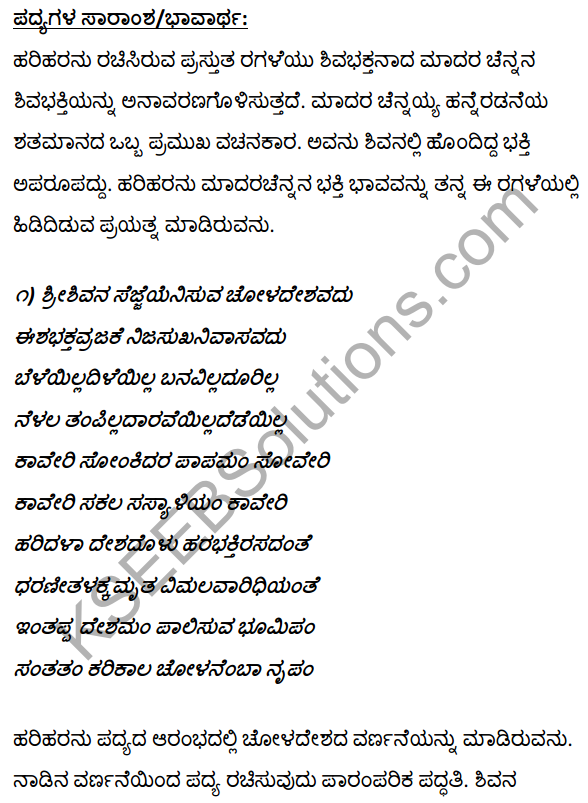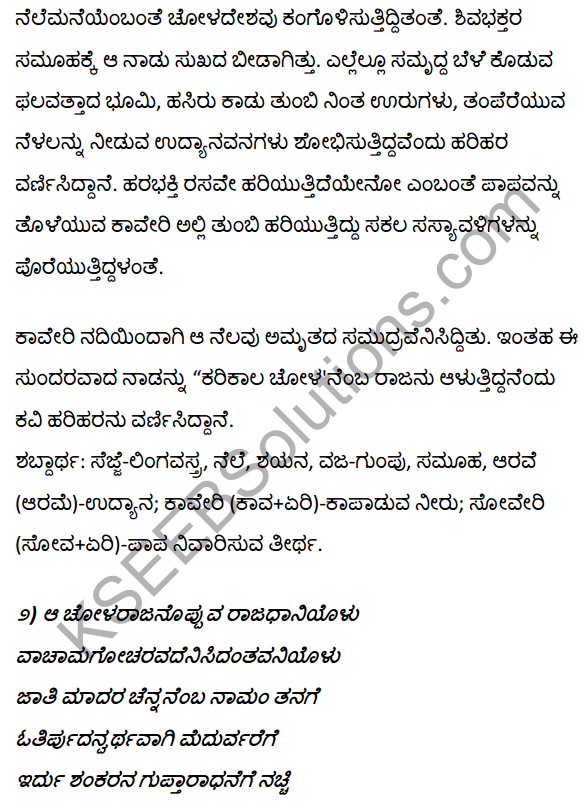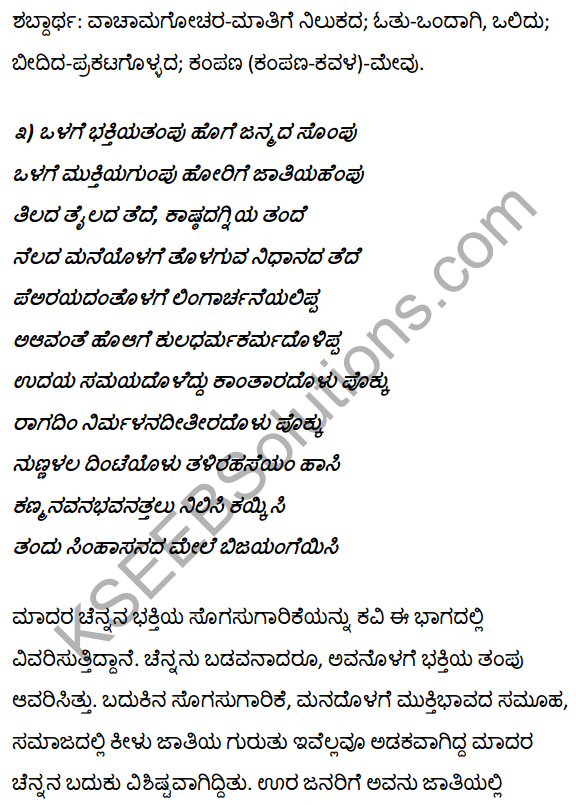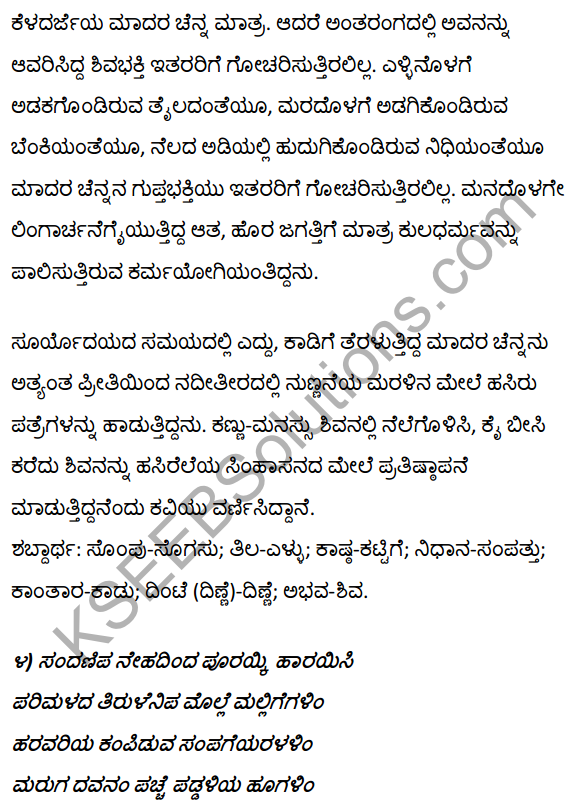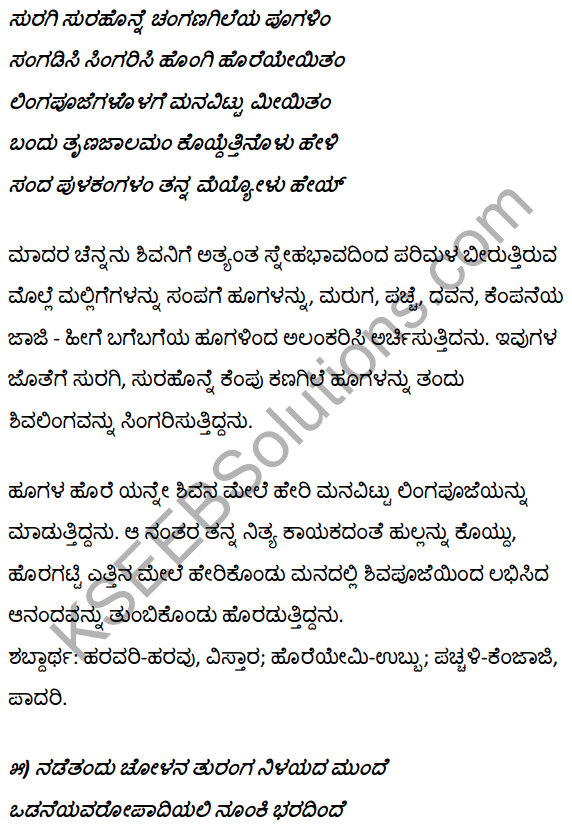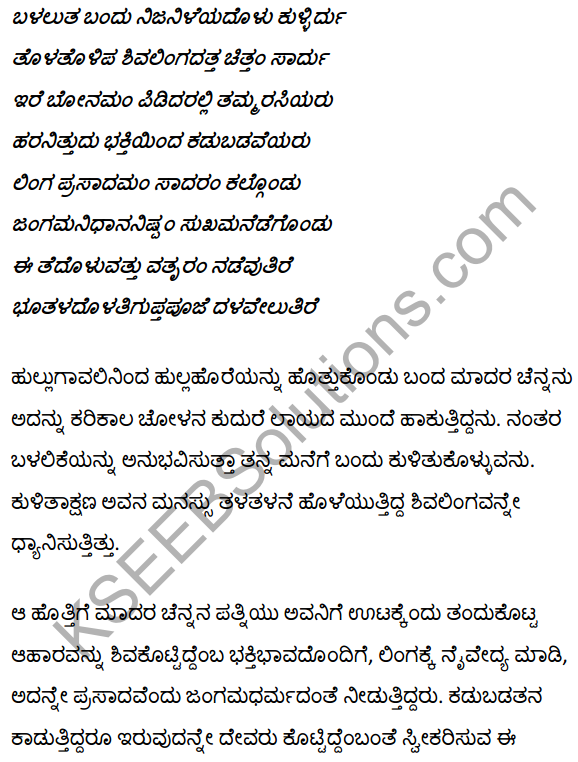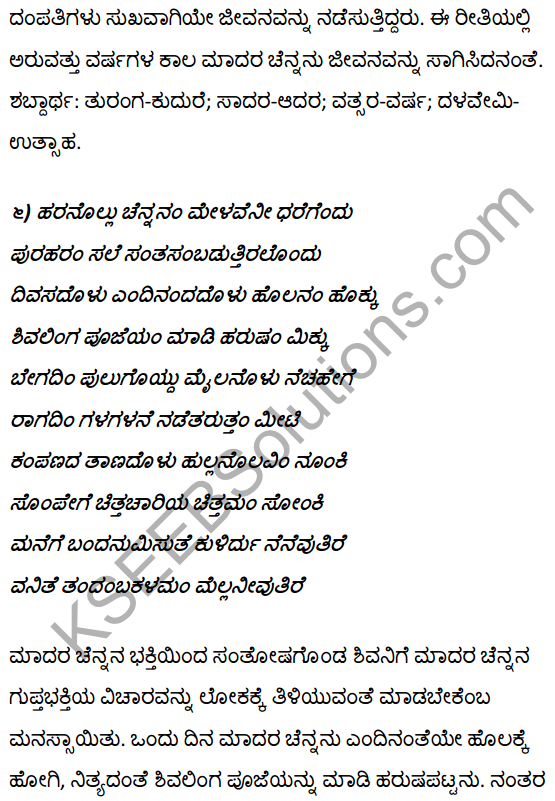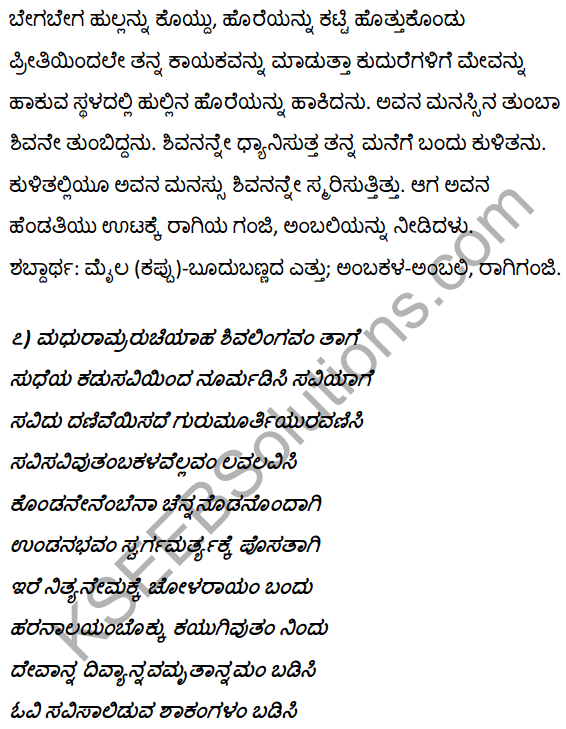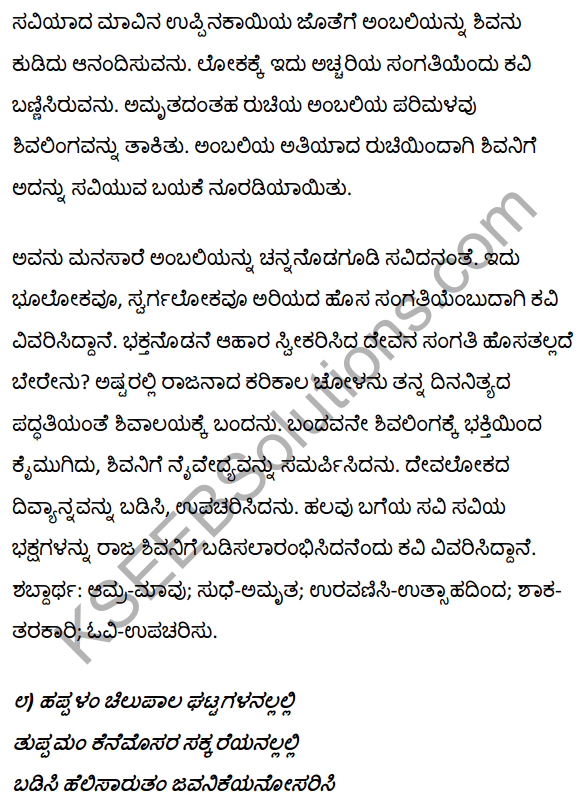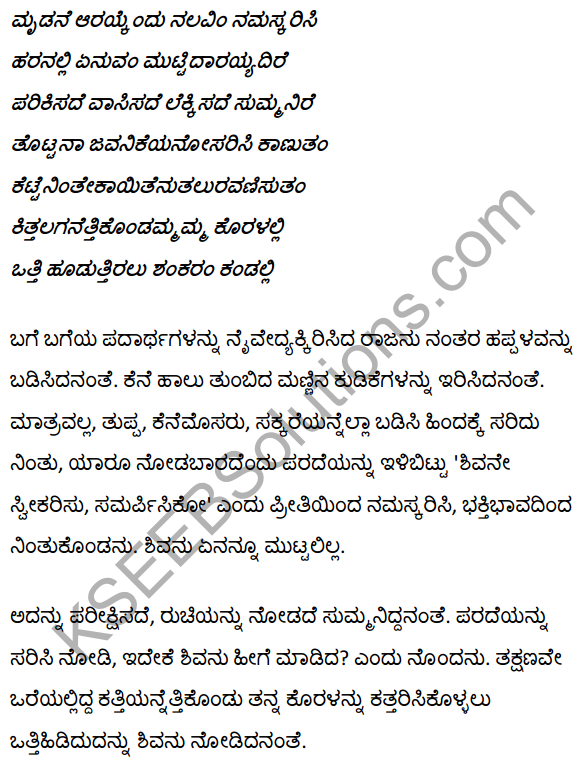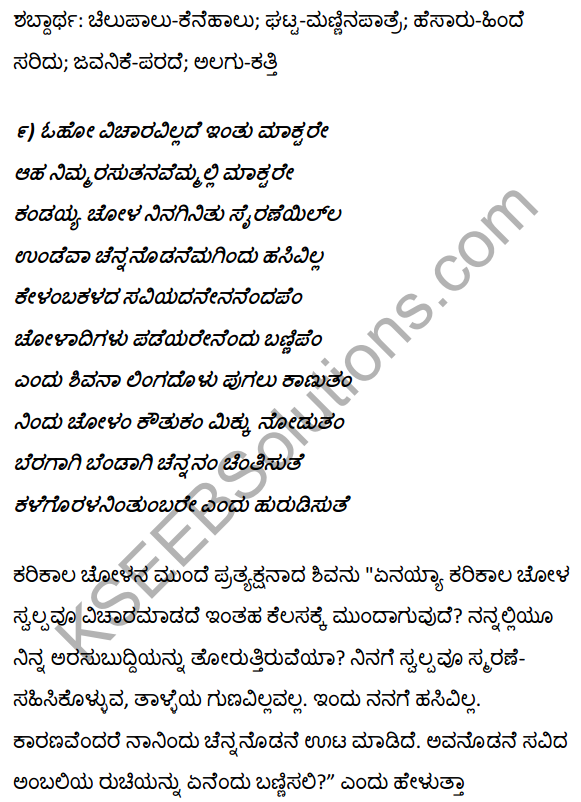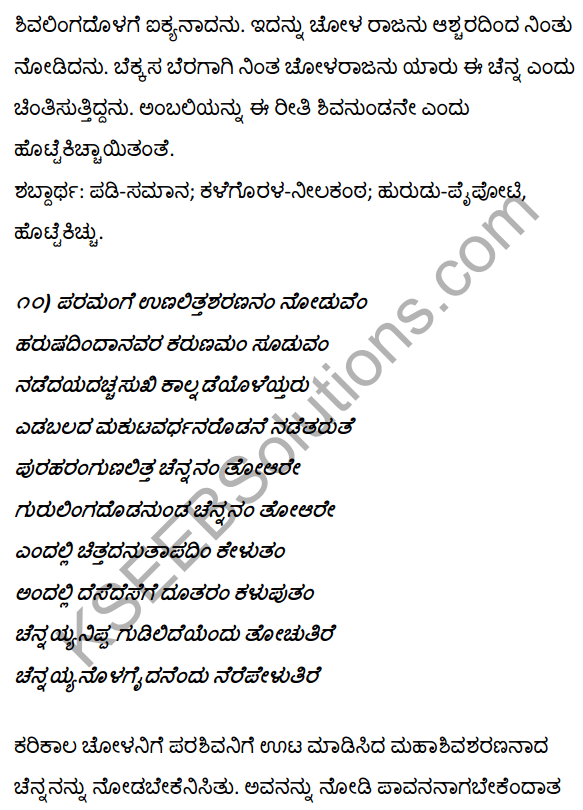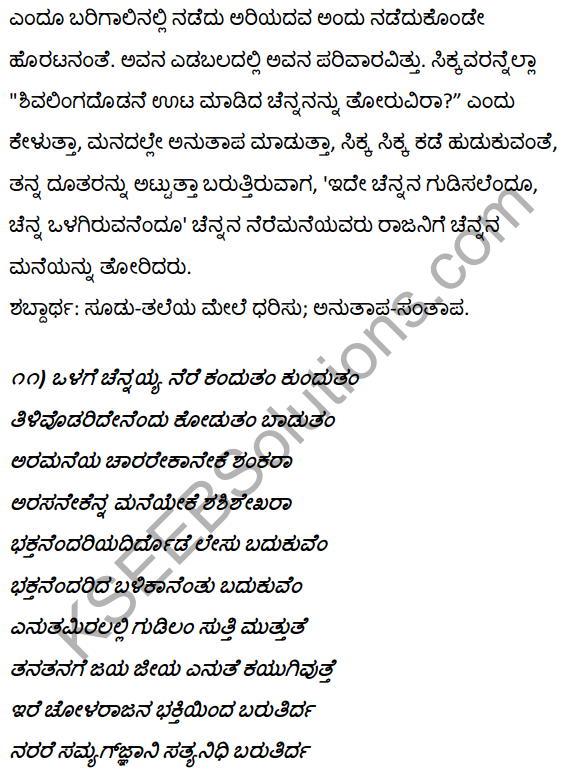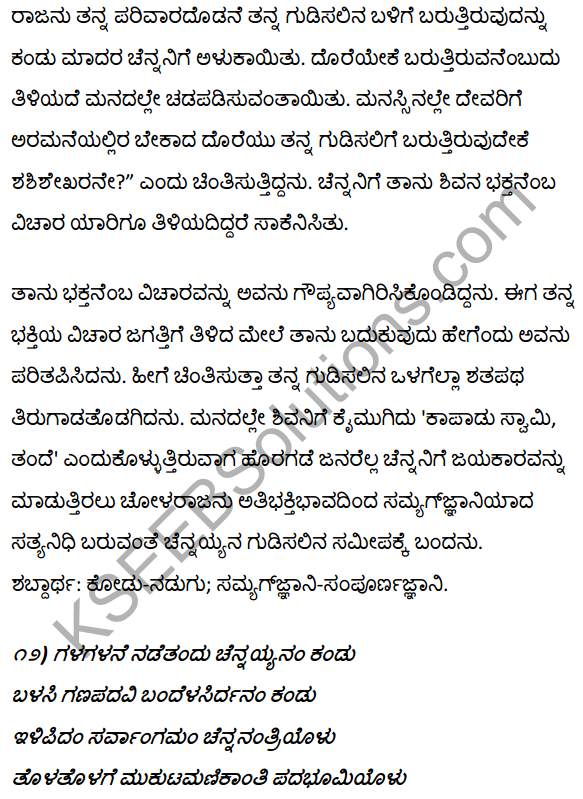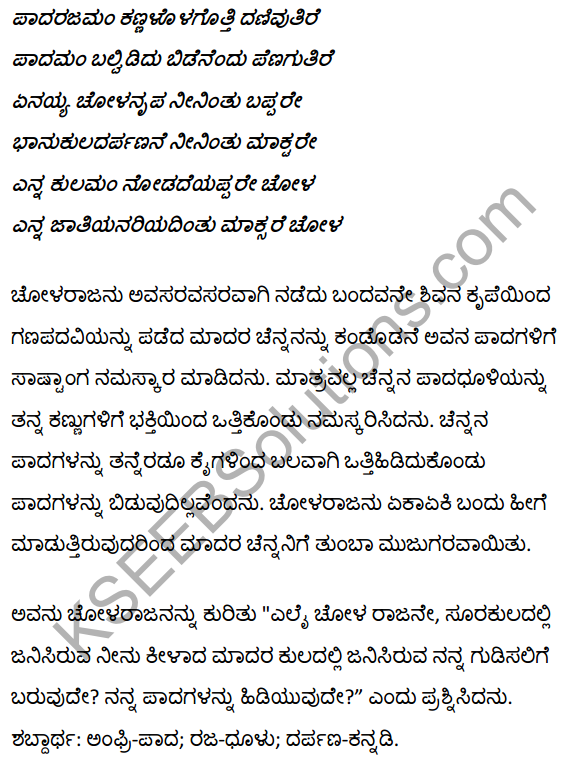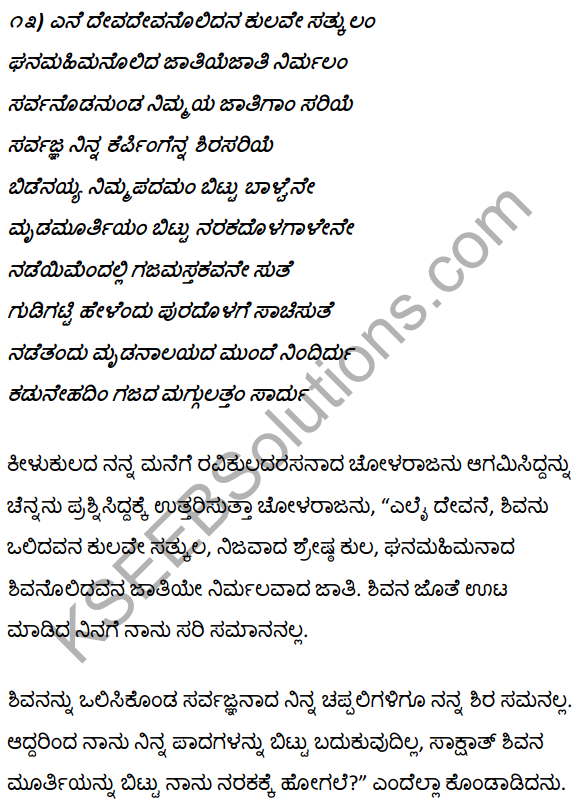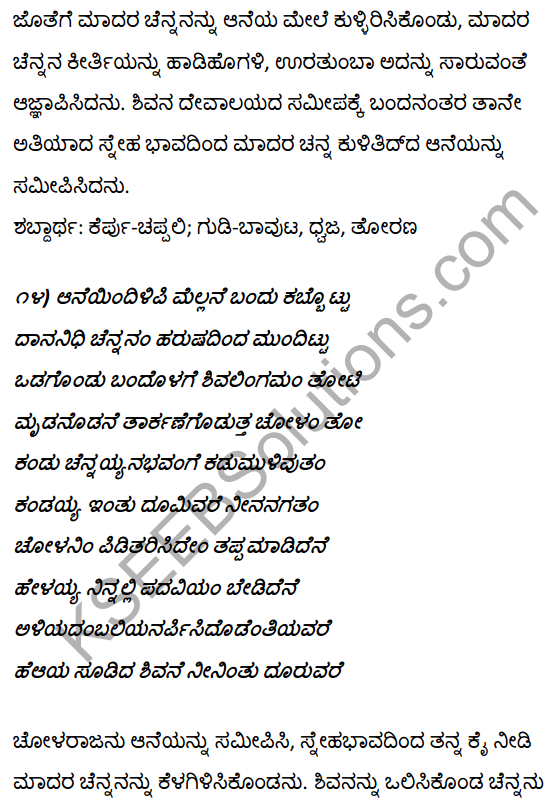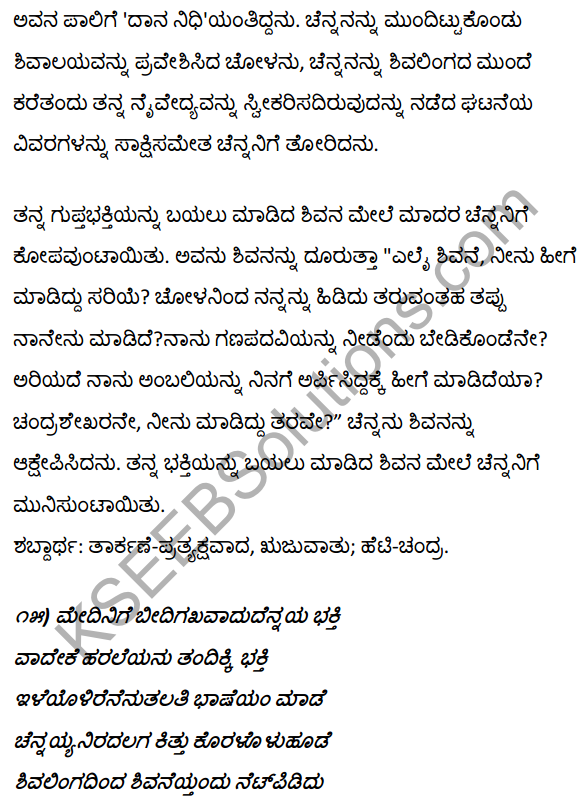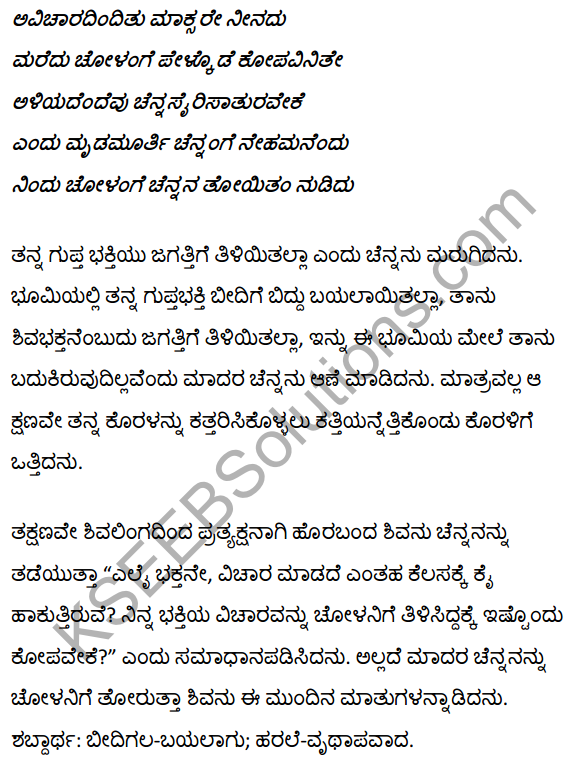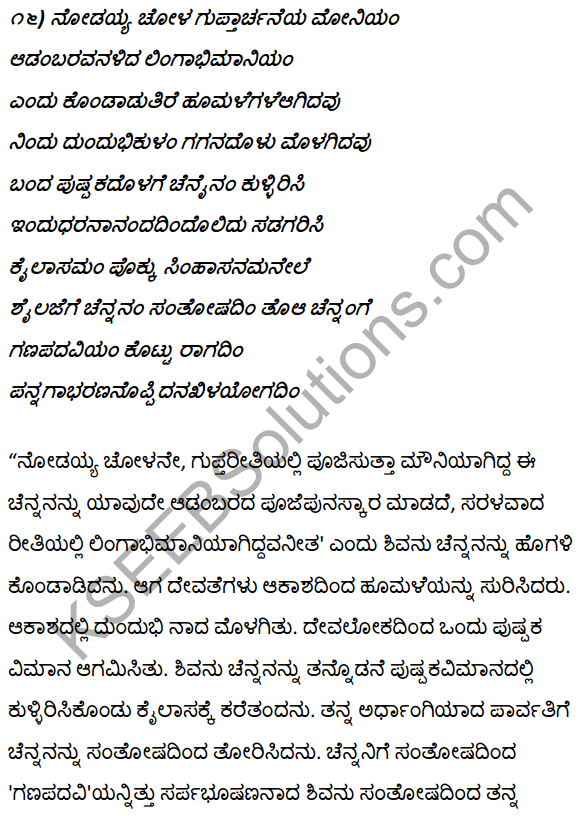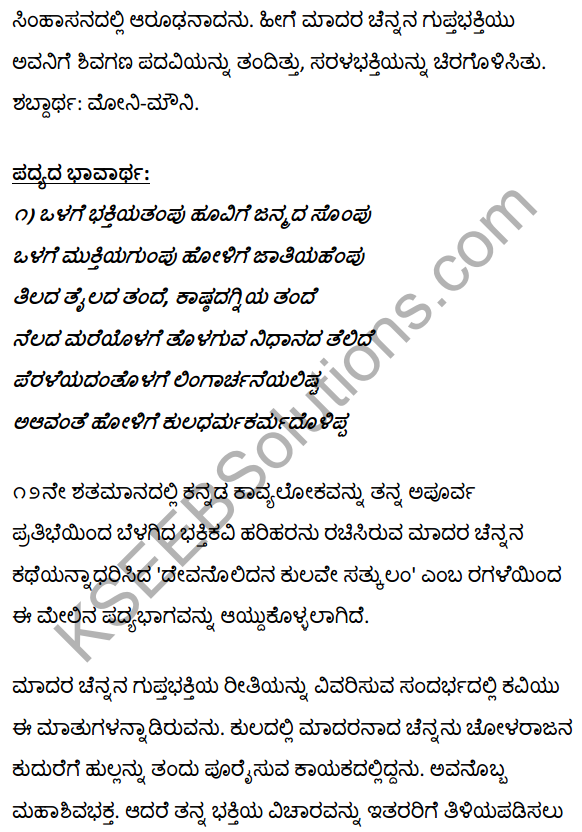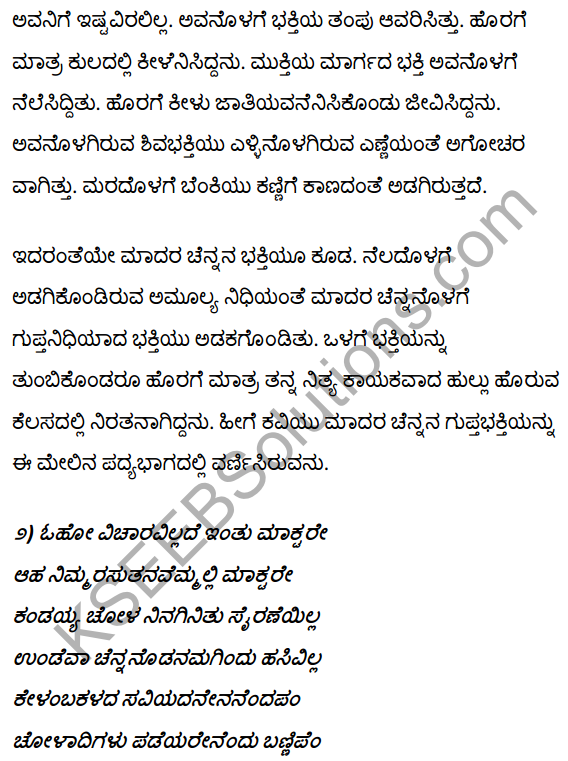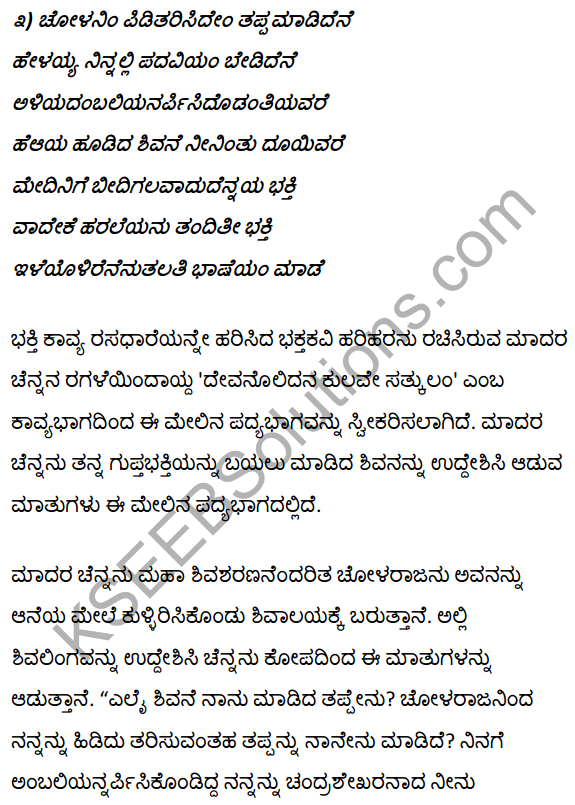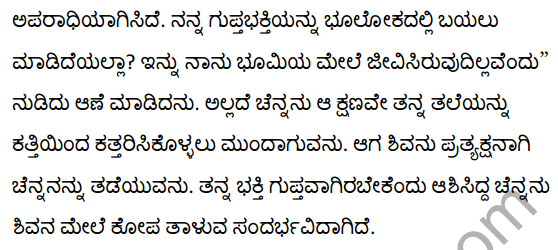Students can Download 1st PUC Business Studies Previous Year Question Paper March 2020 (North), Karnataka 1st PUC Business Studies Model Question Papers with Answers helps you to revise the complete Karnataka State Board Syllabus.
Karnataka 1st PUC Business Studies Previous Year Question Paper March 2020 (North)
Time: 3.15 Hours
Max Marks: 100
Instructions to candidates:
- Write the serial number of questions properly as given in the question paper while answering
- Write the correct and complete answers.
Section – A
I. Answer any ten of following questions in a word or a sentence each. While answering Multiple Choice Questions, write the serial number/alphabet of the correct choice and write the answer corresponding to it. Each question carries one mark: ( 10 × 1 = 10 )
Question 1.
What is trade?
Answer:
Trade refers to buying and selling of goods. It is the means by which goods are exchanged between the producers and the consumers.
Question 2.
In a co-operative society, the principle followed is
(a) One share one vote
(b) One man one vote
(c) No vote
(d) Multiple votes
Answer:
(b) One man one vote
Question 3.
Give an example for a government company.
Answer:
One example of a departmental undertaking is Indian Railways.
Question 4.
Which one of these is not the function of warehousing.
(a) Break the bulk
(b) Consolidation
(c) Price stabilisation
(d) Advertising
Answer:
(d) Advertising
Question 5.
What is plastic money?
Answer:
Plastic money made out of plastic is a new and easier way of paying for goods and services. It includes credit cards, debit cards smart cards, etc.
Question 6.
How is land pollution caused?
Answer:
Excessive use of fertilizers, chemicals, and pesticides in cultivation are causes of land pollution.
Question 7.
Which is considered the birth certificate of the company?
Answer:
Incorporation Certificate.
Question 8.
Debenture represent
(a) Additional Capital of the company
(b) Permanent Capital of the company
(c) Fluctuating Capital of the company
(d) Loan Capital of the company
Answer:
(d) Loan Capital of the company
Question 9.
What is a tax holiday?
Answer:
A government incentive program that offers a tax reduction or elimination to businesses is called a tax holiday.
![]()
Question 10.
Expand ‘AVM’
Answer:
Automated Vending machines.
Question 11.
A receipt issued by the commanding officer of the ship when the cargo loaded on the ship is known as
(a) Shipping Receipt
(b) Mate’s Receipt
(c) Cargo Receipt
(d) Charter Receipt
Answer:
(b) Mate’s Receipt.
Question 12.
What is Export trade?
Answer:
Export trade refers to the sale of a home or domestic goods to other èountries.
Section – B
II. Answer any ten of the following questions in two or three sentences each. Each question carries 2 marks: ( 10 × 2 = 20 )
Question 13.
Mention any two causes of business risks.
Answer:
Causes of business risks are:
(a) Natural causes like floods, earthquakes, etc.
(b) Human causes like theft, forgery, lavish expenditure of top mañagement, embezzlement of cash, etc.
Question 14.
What is a partnership at will?
Answer:
Partnership at will is a type. of partnership exists at the will of the partners. It can continue as long as the partners want and is terminated when any partner gives notice of withdrawal from the partnership to the firm.
Question 15.
Write any two benefits of the joint venture.
Answer:
The benefits of the joint venture are:
(a) Increased Resources and Capacity.
(b) Access to Technology.
Question 16.
Give the meaning of business services.
Answer:
Business is an economic activity involving the production and sale of goods and services undertaken with the motive of earning profit by satisfying human needs in society.
![]()
Question 17.
Give the meaning of outsourcing.
Answer:
Outsourcing is the process by which a company contracts another company to provide particular services.
Question 18.
What are the Social Responsibilities of business?
Answer:
Various activities which provide for the welfare of the society along with the earning of profit for the firm are termed as bSocia1 Responsibility of Business”.
Question 19.
Name any two clauses of the Memorandum of Association.
Answer:
(a) Objects Clause.
(b) Name Clause.
Question 20.
State the financial services rendered by a Factor.
Answer:
(a) Discounting of bills.
(b) Providing information about the creditworthiness of clients.
Question 21.
Give the meaning of village industries.
Answer:
Village industry has been defined as any industry located in a rural area that produces any goods, renders any service with or without the use of power, and in which the fixed capital investment per head or artisan or worker does not exceed Rs. 50,000.
Question 22.
State any two features of wholesalers.
Answer:
(a) The wholesaler purchases goods in large quantities from different manufacturers and resells them to the retailers.
(b) Wholesalers serve as an important link between manufacturers and retailers.
Question 23.
What is pre-shipment finance?
Answer:
Pre-shipment finance is the finance that the exporter needs before shipment of the order for procuring raw materials and other components, processing and packing of goods, and transportation of goods to the port of shipment or we can say pre-shipment finance is the finance which is required to undertake export production.
![]()
Question 24.
Why ‘Certificate of Origin’ is necessary?
Answer:
(a) Certificate of Origin is one of the required documents for import customs clearance in most of the importing countries.
(b) Certificate of origin is the document, certifying the origin of the country wherein the export goods are procured and manufactured originally.
Section – C
III. Answer any seven of the following questions in 10-12 sentences. Each question carries 4 marks: ( 7 × 4 = 28 )
Question 25.
Explain briefly the different types of manufacturing industries.
Answer:
Manufacturing industries may be sub-divided into four types. They are:
(a) Analytical industries: Analytical industries refer to those manufacturing industries which produce many types of products by analyzing, i.e. separating, the same basic raw materials into different products. For example, oil-refining.
(b) Synthetic industries: Synthetic industries refer to all those manufacturing industries where various materials are combined together in the manufacturing process to manufacture a new product. For example, the cement industry.
(c) Processing industries: Processingindustries refer to those manufacturing industries where different components are processed through different processes into a finished product. Paper industry, textile industry, etc. are examples of processiñg industries.
(d) Assembling industries: Assembling industries refer to those manufacturing industries where different component parts already manufactured are assembled into final products. The automobile industry is an example of assembling industries.
Question 26.
Briefly explain any four merits of Departmental Undertakings.
Answer:
Departmental undertakings have certain advantages which are as follows:
(a) These undertakings facilitate the Parliament to exercise effective control over their operations.
(b) These ensure a high degree of public accountability.
(e) The revenue earned by the enterprise goes directly to the treasury and hence is a source of income for the government.
(d) Where national security is concerned, this form is most suitable since it is under the direct control and supervision of the concerned Ministry.
Question 27.
Briefly explain any four types of life insurances.
Answer:
(a) Whole Life Policy: In this kind of policy, the amount payable to the insured will not be paid before the death of the assured. The sum then becomes payable only to the beneficiaries or heir of the deceased
(b) Endowment Life Assurance Policy: The insurer undertakes to pay a specified sum when the insured attains a particular age or on his death whichever is earlier. The sum is payable to his legal heir/s or nominee named therein in cases of death of the assured.
(c) Joint Life Policy: This policy is taken up by two or more persons. The premium is paid jointly or by either of them in installments or lump sum. The assured sum or policy money is payable upon the death of anyone person to the other survivor or survivors.
(d) Annuity Policy: Under this policy, the assured sum or policy money is payable after the assured attains a certain age in monthly, quarterly, and half-yearly or annual installments. The premium is paid in installments over a certain period or a single premium may be paid by the assured. This is useful to those who prefer a regular income after a certain age.
![]()
Question 28.
Explain any four limitations of e-business.
Answer:
The limitation of e-business is:
(a) inability to Experience the Product before Purchase: There are many products that consumers want to touch, feel, hear, taste and smell before they buy. E-commerce takes away that luxury.
(b) Less Security: The biggest obstacle in the growth of e-commerce is the issue of security. Internet is not a secured medium of communication. There are tools or options available to hackers whereby they cannot only monitor but also control any data communicated over the internet.
(c) Dependent on Internet: E-business is dependent on the internet. Mechanical failures in the system can cause unpredictable effects on the total processes.
(d) E-commerce Delays Goods: E-business takes more time to deliver the goods into consumer’s hands when compared to traditional business.
Question 29.
Explain briefly any four arguments for social responsibility.
Answer:
The arguments for social responsibilities are:
(a) Public image: The activities of business towards the welfare of the society earn goodwill and reputation for the business. The earnings of a business also depend upon the public image of its activities.
(b) Government regulation: To avoid government regulations businessmen should discharge their duties voluntarily.
(c) Survival and growth: Every business is a part of society. So for its survival and growth, support from society is very much essential. The business utilizes the available resources like power, water, land, roads, etc. of the society. So it should be the responsibility of every business to spend a part of its profit for the welfare of society.
(d) Employee satisfaction: Besides getting a good salary and working in a healthy atmosphere, employees also expect other facilities like proper accommodation, transportation, education, and training. Employers should try to fulfill all the expectations of the employees because employee satisfaction is directly related to productivity.
Question 30.
Explain briefly any four functions performed by the promoter during the promotional stage in the formation of a company.
Answer:
(a) Identification of Business Idea or Opportunity: The first stage in the promotion of a company is the discovery of a new idea or prospection. It is the ‘promoter who conceives an idea of starting a business for making a profit. With his experience, the promoter discovers the field of gainful investment. His knowledge enables him to judge the soundness of a particular proposal.
(b) Feasibility Study or Detailed Investigation: The second stage in the promotion of a company is detailed investigation. This is done to find out whether the business which he likes to start will be profitable or not. For this purpose, he takes the help of experts Like engineers, accountants, cost accountants, market research specialists, etc. This will enable him to known the probable cost of production, the probable demand, and supply of the product. On the basis of reports submitted, the promoter takes his decision. 1f the reports are favorable, he proceeds further with his business idea.
(c) Company’s Name Approval: Having decided to form a company, the promoters have to select a name for it and submit, an application to the Registrar of Companies for the state in which the registered office of the company is to be situated, for its approval. The proposed name may be approved if it is not considered undesirable. Therefore, three names, in order of their priority are given in the application to the Registrar of Companies.
(d) Fixing up Signatories to the Memorandum of Association: Promoters have to decide about the members who will be signing the Memorandum of Association of the proposed company. Usually, the people signing Memorandum are also the first directors of the company.
(e) Appointment of Professional: Professionals such as mercantile bankers, auditors, legal advisors, etc. are appointed by the promoters to assist them in the preparation of necessary documents which are required to be filed with the Registrar of Companies.
(f) Preparation of Necessary Documents. The promoter takes up steps to get prepared certain legal documents, which have to be submitted under the law, to the Registrar of the Companies for getting the company registered. These documents are the Memorandum of Association and Articles of Associations.
![]()
Question 31.
Explain briefly the merits of retained earnings as a source of business finance.
Answer:
The company generally does not distribute all its earnings amongst the shareholders as dividends. A portion of the net earnings may be retained in the business for use in the future. This is known as retained earnings.
Merits:
(a) Retained earnings are a permanent source of funds available to an organization.
(b) It does not involve any explicit cost in the form of interest, dividend or floatation cost.
(c) As the funds are generated internally, there is a greater degree of operational freedom and flexibility.
(d) It enhances the capacity of the business to absorb unexpected losses.
(e) It may lead to an increase in the market price of the equity shares of a company.
Demerits:
(a) Excessive plowing back may cause dissatisfaction amongst the shareholders as they would get lower dividends.
(b) It is an uncertain source of funds as the profits of the business are fluctuating.
(c) The opportunity cost associated with these funds is not recognized by many firms. This may lead to sub-optimal use of the funds.
Question 32.
Write short notes on (a) Equity shares (b) Preference Shares
Answer:
(a) Equity Shares:
(a) Equity shares represent the ownership of a company and thus the capital raised by the issue of such shares is known as ownership capital or Owner’s funds.
(b) Equity shares are shares, which do not enjoy any preferential right in the matter of claim of dividend or repayment of capital.
(c) Equity shareholders are regarded as the owners of the company who exercise their authority through the voting rights they enjoy.
(b) Preference Shares:
(a) The capital raised by the issue of preference shares is called preference share capital.
(b) The preference shareholders enjoy a preferential position over equity shareholders in two ways:
- Receiving a fixed rate of dividend, out of the net profits of the company, before any dividend is declared for equity shareholders.
- Receiving their capital after the claims of the company’s creditors have been settled, at the time of liquidation.
(c) In other words, as compared to the equity shareholders, the preference shareholders have a preferential claim over dividend and repayment capital. Preference shares resemble debentures as they bear a fixed rate of return. ìl’so as the dividçnd is payable only at the discretion of the directors and only out of profit after tax, to that extent, these resemble equity shares.
(d) Thus, prefèrènceshares have some characteristics of both equity shares and debentures. Preference sÍaìeholders generally do not enjoy any voting rights.
Question 33.
Explain briefly any four features of cottage industries.
Answer:
The features of cottage industries are:
(a) Cottage industries are organized by individuals, with private resources.
(b) Cottage industries normally use family labor and locally available talent.
(c) The equipment used in cottage industries is simple.
(d) Capital investment in cottage industries is small.
(e) Cottage industries produce simple products, normally on their own premises.
(f) Cottage industries produce goods using indigenous technology.
![]()
Question 34.
Explain briefly the different types of itinerant retailers.
Answer:
The features of cottage industries are:
(a) Cottage industries are organized by individuals, with private resources.
(b) Cottage industries normally use family labor and locally available talent.
(c) The equipment used in cottage industries is simple.
(d) Capital investment in cottage industries is small.
(e) Cottage industries produce simple products, normally on their own premises.
(f) Cottage industries produce goods using indigenous technology.
Section – D
IV. Answer any four of the following questions in 20-25 sentences each. Each question carries 8 marks: ( 4 × 8 = 32 )
Question 35.
Explain the types of Cooperative societies.
Answer:
Types of Co-operative society:
1. Consumer’s cooperative societies:
(a) The consumer cooperative societies are formed to protect the interests of consumers.
(b) The members comprise consumers desirous of obtaining good quality products at reasonable prices.
(c) The society aims at eliminating middlemen to achieve economy in operations.
(d) It purchases goods in bulk directly from the wholesalers and sells goods to the members directly.
(e) Profits, if any, are distributed on the basis of either their, capital contributions to the society or purchases made by individual members.
2. Producer’s cooperative soclètles:
(a) These societies are set up to protect the interest of small producers.
(b) The members comprise òf producerš desirous of procuring inputs for production of goods to meet the demand of consumers.
(c) The society aims to fìghtagainst the big capitalists and enhance the bargaining power of the small producers.
(d) It supplies raw materials, equipment, and other inputs to the members and also buys their output for sale.
(e) Profits among the members are generally distributed on the basis of their contributions to the total pool of goods pro1uced or sold by the society.
3. Marketing cooperative societies:
(a) Such societies are established to help small producers in selling their products.
(b) The members consist of producers who wish to obtain reasonable prices for their output.
(c) The society aims to eliminate middlemen and improve the competitive position of its members by securing a favorable market for the products.
(d) It pools the output of individual members and performs marketing functions like transportation, warehousing, packaging, etc.
(e) Profits are distributed according to each member’s contribution to the pool of output.
4. Farmer’s cooperative societies:
(a) These societies are established to protect the interests of farmers by providing better inputs at a reasonable cost. :
(b) The members comprise farmers who wish to jointly take, up farming activities.
(c) The aim is ‘to gain the benefits of large scale fanning and increase the productivity.
(d) Such societies provide better quality seeds, fertilizers, machinery, and other modem techniques.
5. Credit cooperative societies:
(a) Credit cooperative societies are established for providing easy credit on reasonable terms to the members.
(b) The members comprise persons who seek financial help in the form of loans.
(c) The aim of such societies is to protect the members from the exploitation of lenders who charge high rates of interest on loans.
(d) Such societies provide loans to members out of the amounts collected as capital and deposits from the members and charge in rates of interest.
6. Cooperative housing societies:
(a) To help people with limited income to construct houses at reasonable costs.
(b) The members of these societies consišt proeurîng residential accommodation at lower costs.
(c) The aim is to solve the housing problem of the members by constructing houses and giving them the option of paying in installments.
(d) These societies construct flats or provide lots to members ‘on which the members themselves can construct the houses as per their choice.
![]()
Question 36.
Explain the features of a Joint Stock Company.
Answer:
(a) Artificial person: Just like an individual, who takes birth, grows, enters into relationships, and dies, a joint-stock company takes birth, grows, enters into relationships, and dies. However, it is called an artificial person as to its birth, existence, and death are regulated by law arid it does not possess phýsical attributes like that of a normal person.
(b) Legal formation: No single indìvidtial or a group of individuals can start a business and call it a joint-stock company. A joint-stock company comes into existence only when it has been registered after completioñ of all formalities required by the Indian Companies Act., 2013.
(c) Separate legal entity: Being an artificial person a company has its own legal entity separate from its members. It can own assets or property, enters into contracts, sue, or can be sued by anyone in the court of law. Its shareholders cannot be held liable for any conduct of the company.
(d) Perpetual existence: A joint-stock company continues to exist as long as it fulfills the requirements of law. It is not affected by the death, lunacy, insolvency, or retirement of any of its members.
(e) Common seal: A joint-stock company has a seal, which is used while dealing with others or entering into contracts with outsiders. It is called a common seal as it can be used by any officer at any level of the organization working on behalf of the company. Any document, on which the company’s seal ‘is put and is duly signed bý any official of the company, becomes binding on the company.
(f) Association of persons: A company is a voluntary association of persons established for-profit motive. A private company must have at least 2 persons and the public limited company must have at least 7 persons to get it registered. The maximum number of persons required for the registration in the case of a private company is 50 and in the case of a public company, there is no maximum limit.
(g) Limited liability: The liability of the shareholders is limited to the extent of the face value of the shares held by them. The shareholders are not liable personally for the paýment of the debt of the company.
(h) Transferability of shares: The shares of a public limited company are freely transferable and can be purchased and sold through the stock exchanges. A shareholder of a public limited company can transfer his shares without the consent of others except in the case of private companies.
(i) Large capital: A joint-stock company can raise a large amount of capital because the number of persons contributing towards capital is more in number when compared to sole proprietorship or partnership.
(j) Democratic management: Joint stock companies have democratic management and control. That is, even though the shareholders are owners of the company, all of them cannot participate in ‘the management of the company. Normally, the shareholders elect representatives from among themselves known as ‘Directors’ to manage the affairs of the company.
Question 37.
Give the meaning of warehousing and explain the different types of warehouses.
Answer:
The warehouse was initially viewed as a static unit for keeping and storing goods in a scìentifÌc and systematic manner so as to maintain their original quality, value, and usefulness.
(a) Private Warehouses: These are operated, owned, or leased by a company handling their own goods, such as retail chain stores or multi-brand, multi-product companies. As a general rule, an efficient warehouse is planned around a material handling system in order to encourage maximum efficiency of product movement.
(b) Public Warehouses: It can be used for storage of goods by traders, manufacturers, or any member of the public after the payment of a storage fee or charges. The government regulates the operation of these warehouses by issuing licenses for them to private parties.
(c) Bonded Warehouses: These are licensed by the government to accept imported goods prior to payment of tax and customs duty. These are goods which are imported from other countries. Importers are not permitted to remove goods from the docks or the airport till customs duty is paid.
(d) Government Warehouses: These warehouses are fully owned and managed by the government. The government manages them through organizations set up in the public sector.
![]()
Question 38.
Discuss the factors that affect while making the decision for the choice of an appropriate source of funds by a business organization.
Answer:
(a) Cost: There are two types of cost viz., the cost of procurement of funds and cost of utilizing the funds. Both these costs should be taken into account while deciding about the source of funds that will be used by an organization.
(b) Financial strength and stability of operations: The financial strength of a business is also a key determinant. In the choice of source of funds, the business should be in a sound financial position so as to be able to repay the principal amount and interest on the borrowed amount.
(c) Form of organization and legal status: The form of business organization and status influences the choice of a source for raising money.
(d) Purpose and time period: Business should plan according to the time period for which the funds are required. A short-term need for example can be met through borrowing funds at a low rate of interest through trade credit, commercial paper, etc. For long-term finance, sources such as the issue of shares and debentures are more appropriate.
(e) Risk profile: Businesses should evaluate each of the sources of finance in terms of the risk involved. For example, there is the least risk inequity as the share capital has to be repaid only at the time of winding up and dividends need not be paid if no profits are available.
(f) Control: A particular source of funds may affect the control and power of the owners on the management of a firm. Issue of equity shares may mean dilution of the control.
(g) Effect on creditworthiness: The dependence of a business on certain sources may affect its creditworthiness in the market.
(h) Flexibility and ease: Another aspect affecting the choice of a source of finance is the flexibility and ease of obtaining funds. Restrictive provisions, detailed investigation, and documentation in case of borrowings from banks and financial institutions.
(j) Tax benefits: Various sources may also be weighed in terms of their tax benefits. For example, while the dividend on preference shares is not tax-deductible, interest paid on debentures and loans is tax-deductible and may, therefore, be preferred by organizations seeking tax advantage.
Question 39.
Explain the four merits and four limitations of mail-order houses.
Answer:
Merits
(a) Limited capital requirement: Mail order business does not require heavy expenditure on building and other infrastructural facilities. Therefore, it can be started with a relatively low amount of capital.
(b) Elimination of middlemen: The biggest advantage of mail-order business from the point of view of consumers is that unnecessary middleman between the buyers and sellers are eliminated. This may result in a lot of savings both to the buyers as well as to the sellers.
(c) Wide reach: Under this system, the goods can be sent to all the places having postal services. This opens a wide scope for business as a large number of people throughout the country can be served through the mail.
(d) Convenience: Under this system goods are delivered to the doorstep of the customers. This results in great convenience to the customers in buying these products.
(e) Absence of bad debt: Since the mail-order houses do not extend credit facilities to the customers, there are no chances of any bad debt on account of non-payment of cash by the customers.
Limitations
(a) No credit: Supermarkets sell their products L a cash basis only. No credit facilities are made available to the buyers. This restricts the purchasing power of buyers from such markets.
(b) No personal attention: Supermarkets work on the principle of self-service. The customers, therefore, don’t get any personal attention. As a result, such commodities that require personal attention by salespeople cannot be handled effectively in supermarkets.
(c) Mishandling of goods: Some customers handle the goods kept on the shelf carelessly. This may raise costs in supermarkets.
(d) High overhead expenses: Supermarket incurs high overhead expenses. As a result, these have not been able to create low price appeal among the customers.
(e) Possibility of abuse: This type of business provides a greater possibility of abuse to dishonest traders to cheat the customers by making false claims about the products or not honoring the commitments made through handbills or advertisements.
(f) High dependence on postal services: The success of mail-order business depends heavily on the availability of efficient postal services at a place. But in a vast country like ours, where many places are still without postal facilities, this type of business has limited prospects.
![]()
Question 40.
Explain briefly the steps involved in the import procedure.
Answer:
(a) Trade inquiry: The importing firm approaches the export firms with the help of trade inquiry they collecting information about their export prices and terms of exports. After receiving a trade inquiry, the exporter will prepare a quotation called a proforma invoice.
(b) Procurement of import license: There are certain goods that can be imported freely, while others need licensing. The importer needs to consult the Export-Import (EXM) policy in force to know whether the goods that he or she wants to import are subject to import licensing.
(c) Obtaining foreign exchange: Since the supplier in the context of an import transaàtion resides in a foreign country, he/she demands payment in a foreign currency Payment in foreign currency involves the exchange of Indian currency into foreign currency.
(d) Placing order or indent: After obtaining the import license, the importer placeš an import order or indent with the exporter for the supply of the specified products. The import order contains information about the price, quantity size, grade, and quality of goods ordered and the instructions relating to packing, shipping, ports of shipment and destination, etc
(e) Arranging for finance: The importer should make arrangements in advance to pay to the exporter on the arrival of goods at the port. Advanced planning for financing imports is necessary so as to avoid huge demurrages (i.e., penalties) on the imported goods lying uncleared at the port for want of payments.
(f) Obtaining a letter of credit: If the payment terms agreed between the importer and the overseas supplier is a letter of credit, then the importer should obtain the letter of credit from its bank and forward it to the overseas supplier.
(g) Receipt of shipment advice: After loading the goods on the vessel, the overseas supplier dispatches the shipment advice to the importer. Shipment advice contains information about the shipment of goods.
(h) Retirement of import documents: Having shipped the goods, the overseas supplier prepares a set of necessary documents as per the terms of contract and letter of credit and hands it over to his or her banker for their onward transmission and negotiation to the importer in the manner as specified in the letter of credit.
(i) Arrival of goods: Goods are shipped by the overseas supplier as per the contract. The person in charge of the carrier (ship or airway) informs the officer in charge at the dock or the airport about the arrival of goods in the importing country. He provides the document called import general manifest. import general manifest is a document that contains the details of the imported goods.
(j) Customs clearance and release of goods: All the goods imported into India have to pass through customs clearance after they cross the Indian borders. Customs clearance is a somewhat tedious process and calls for completing a number of formalities. It is, therefore, advised that importers appoint C&F agents who are well versed with such formalities and play an important role in getting the good’s customs cleared.
Section – E (PRACTICAL ORIENTED QUESTIONS)
V. Answer any two of the following questions: ( 2 × 5 = 10 )
Question 41.
As a customer of a bank, list out any five e-banking services enjoyed by you.
Answer:
The five e-banking services are:
(a) Electronic fund transfer.
(b) Automated teller machines.
(c) Electronic data Interchange.
(d) Credit cards electronic or digital cash.
(e) Telebanking / Mobile banking.
(f) Anywhere banking (or) core banking.
Question 42.
As a businessman having concern for environmental protection, suggest any five steps measures to control environmental pollution.
Answer:
Five measures to control environmental pollution are:
(a) Definite commitment by top management of the enterprise to create, maintain and develop work culture for environmental protection and pollution prevention.
(b) Complying with laws and regulations enacted by the government for the prevention of pollution.
(c) Participation in government programs relating to the management of hazardous substances, plantation of trees, and checking deforestation.
(d) Ensuring that commitment to environmental protection is shared throughout the enterprise by all divisions and employees.
(e) Arranging educational workshops and training materials to share technical information and experience with suppliers, dealers, and customers to get them actively involved in pollution control programs.
![]()
Question 43.
Give a list of any five institutions which support small businesses in India.
Answer:
Five institutions that support small businesses in India are:
(a) National Bañk for Agriculture and Rural Development (NABARD)
(b) National Small Industrial Corporation (NSIC)
(c) Small Industrial Development Bank of India (SIDBI)
(d) Rural and Women Entrepreneurship Development (RWED)
(e) District Industries Centres (DICs).

